AUBURN ENGINEER
SAMUEL GINN COLLEGE OF ENGINEERING FALL/WINTER 2022


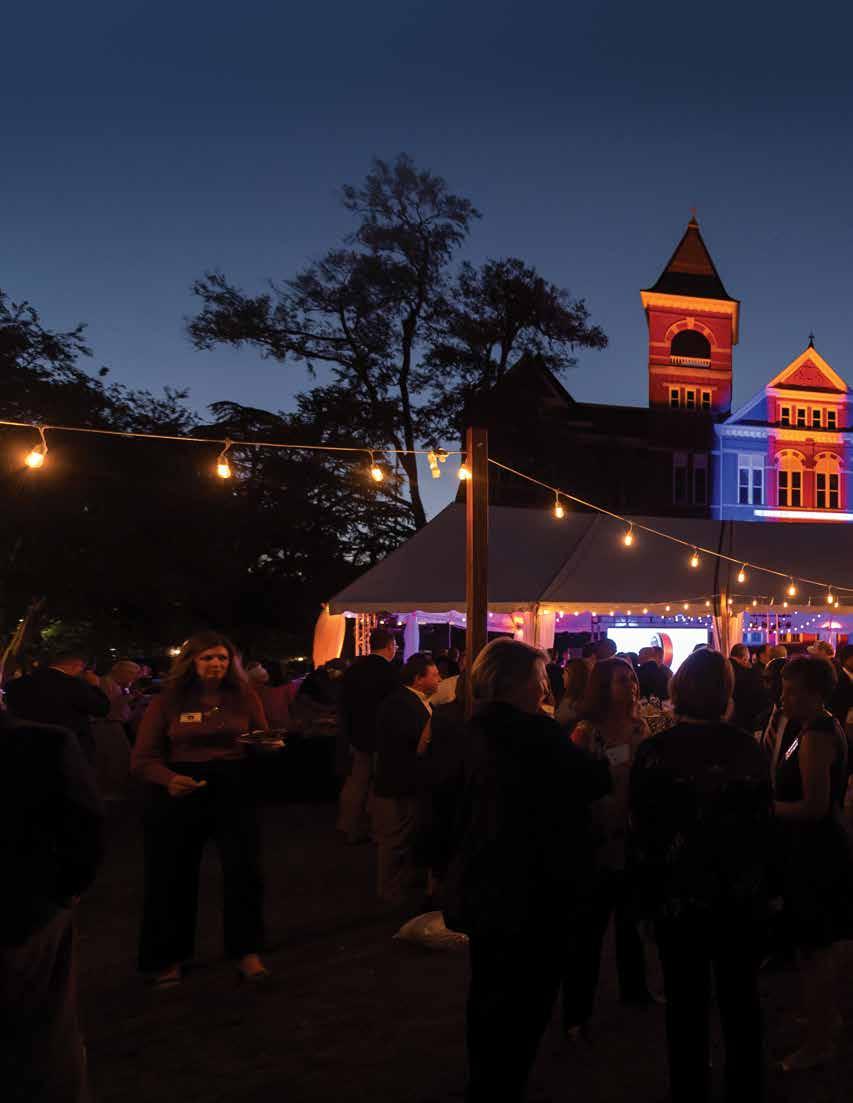
In 1872, Auburn got a new name. And a new purpose. The world hasn’t been the same since. This year marks the 150th anniversary of Auburn’s reorganization under the Morrill Act from East Alabama Male College into the Agricultural and Mechanical College of Alabama, which established agricultural and engineering education at Auburn. On a late afternoon in September 2022, in the shadow of where the university’s cornerstone instructional programs were born, the year-long celebration began.

million mile mark Nation’s premier test track provides partners with outdoor laboratory
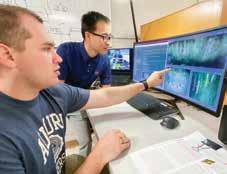
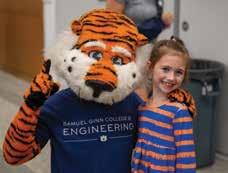

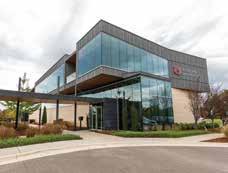
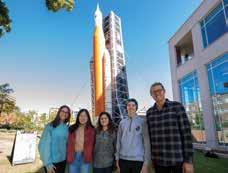
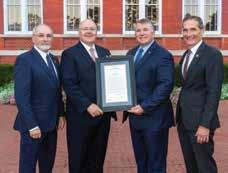
Bethany Deuel
Jeremy Henderson
Kyle Lubinsky
Joe McAdory
Cassie Montgomery
Carla Nelson
Virginia Speirs
Danny Doyle
Josie Krentz
FROM
This year, as we celebrate the 150th anniversary of the Samuel Ginn College of Engineering and the College of Agriculture at Auburn University, we reflect upon the impact our college and graduates have made on our state, our region, our country and our world. While this year has been a time of change in the college, it has been one of the most exciting times here at Auburn in my more than 30 years with the university.
For those of you who don’t know me, I am Steve Taylor and I am the interim dean of the Samuel Ginn College of Engineering. I assumed the role in April after Dr. Chris Roberts was named as Auburn University’s 21st president. Here in the college, we are eternally grateful for Dr. Roberts’ leadership during the past 10 years and we are thrilled to see him now leading the university and charting its course as one of the preeminent universities in the nation.
Prior to his ascension as president, Dr. Roberts and I had the pleasure of working on several big and bold projects that will help propel Auburn Engineering and the university into the next 150 years. Among those projects includes the Auburn University Research and Innovation Campus in Huntsville and the Auburn University Gulf Coast Engineering Research Station in Orange Beach.
John Sluis
Visit Auburn Engineer online at eng.auburn.edu/magazine for videos, photos, podcasts and more. You may also submit news items, suggestions or comments by clicking the Contact Us tab.
Auburn Engineer is published twice yearly by the Samuel Ginn College of Engineering.

Engineering Communications and Marketing c/o Editor
1210D Shelby Center Auburn, AL 36849 334-844-2444
© 2022 Samuel Ginn College of Engineering, Auburn University
Auburn University is an equal opportunity educational institution/employer.
We opened the doors to the Research and Innovation Campus, located in Cummings Research Park, in October on what was a monumental day for Auburn. Much like Neil Armstrong and Buzz Aldrin did in 1969, we planted the Auburn flag in Huntsville, one of America’s most important science and technology hubs. You might even say that a different eagle has landed.
In November, the university’s Board of Trustees approved a proposal to form the Auburn University Applied Research Institute, which will be housed at the Research and Innovation Campus in Huntsville. This new institute will help us focus even more on developing solutions to the tough problems of our government and industry partners in places such as Huntsville and beyond. We will soon begin a search for an institute director.
This wonderful news came on the heels of another huge announcement as the university’s Board of Trustees approved the Gulf Coast Engineering Research Station project. You can read more about these historic moves by the college in this issue.
While it’s been a pleasure and a tremendous honor to serve as interim dean, a national search for a permanent dean has begun and interviews will begin in the spring. I’m confident that the committee Interim Provost Vini Nathan has assembled will select a candidate who has Auburn University and the Samuel Ginn College of Engineering’s best interest at heart, and who has a desire to propel Auburn forward as the best student-centered engineering experience in America. Auburn’s path and course has never been greater, and we are beyond grateful for the support of our alumni, corporate partners and friends who believe in our students, faculty, staff, mission and vision to continue to position Auburn Engineering among the nation’s elite.
War Eagle!
Steven E. Taylor
Allan David has been named as the Samuel Ginn College of Engineering’s acting associate dean for research.
David, the John W. Brown associate professor in the Department of Chemical Engineering, assumed the position in June. David will serve in this capacity until a new dean is named. Steve Taylor, the former associate dean for research, is currently serving as interim dean following former dean Chris Roberts’ move to become Auburn’s 21st president.
“Dr. David brings a fresh perspective to the role, along with a breadth of knowledge across many disciplines,” Taylor said. “As a talented researcher, teacher, entrepreneur and scholar, he has a wealth of experience and will build on our research enterprise and creative partnerships with academia, industry and government sponsors.”
As acting associate dean for research, David assists with the college’s strategic planning, budget development, facilities oversight and administration. In collaboration with Interim Dean Taylor, David promotes a vibrant research culture by working with department chairs, institute directors and center directors to improve each of their teams’ contribution to the mission of research and scholarship.

Auburn University junior Peter Abraham is a Barry M. Goldwater Scholar, an honor bestowed on only 496 students nationwide. The scholarship is widely considered the most prestigious award in the United States for undergraduates in science, technology, engineering and mathematics.
Abraham, from Auburn, is majoring in chemical engineering and minoring in computer science in the Samuel Ginn College of Engineering and was chosen in April from a field of nearly 5,000 college students.
Currently, Abraham is involved in two areas of research: developing more effective cancer drug testing models and understanding the link between colorectal cancer and obesity.

According to Abraham, when developing cancer drugs, companies start by finding a suitable drug, testing it on mice and other models and then eventually testing it on humans as well. Yet, most cancer drugs that enter human clinical trials are not approved for use, resulting in very large drug development costs. His research goal is to develop a better model for testing and screening drug safety and efficacy prior to clinical trials.
Auburn is going to the moon.
That’s right. When Artemis I — the most ambitious space mission since the shuttle — rocketed into the heavens to begin a series of missions, the cumulative work of Auburn University alumni, scientists, engineers and researchers rode along.
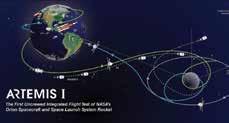
Standing 322 feet, the 5.75-millionpound unmanned Artemis I, powered by a central Space Launch System (SLS) orange core rocket with twin solid rocket boosters, carried spacecraft Orion up to 280,000 miles in an exploratory mission NASA considers, “The first in a series of increasingly complex missions… that will provide a foundation for human deep space exploration and demonstrate our commitment and capability to extend human existence to the moon and beyond.”
“We’re excited to have the opportunity to play a variety of roles in the future of space exploration,” said Steve Taylor, interim dean of engineering. “Auburn’s history with NASA is among the richest in the nation, from men and women in space, to engineers who helped design Gemini, Saturn V, the Space Shuttle and now the Space Launch System rocket and Orion spacecraft on the Artemis I mission, to our researchers who keep finding means to make space travel more efficient and innovative. Auburn is proud to play a role in this new, ambitious mission and looks forward to being a leader in space engineering and exploration for years to come.”
Students and faculty in the Samuel Ginn College of Engineering filled the Brown-Kopel Center Grand Hall on Oct. 28, as Auburn graduate and former commander of the U.S. Cyber Command (USCYBERCOM) and director of the National Security Agency (NSA) Adm. Michael Rogers (USN Ret.) answered questions during an hour-long event.
Highlighting Cybersecurity Awareness Month, the event “Grand Challenges in Cybersecurity: A Discussion with Admiral Rogers” featured topics such as the future of cyber workforce development, personal cybersecurity, autonomous weaponry, how USCYBERCOM and the NSA were structured under his command and even his perspective on if cyberattacks on the homeland warranted a response compared to physical attacks.
“Cybersecurity Awareness Month is designed to remind us that even though we’re very busy, we need to step back and ask ourselves, ‘What are the implications of cybersecurity in our day-to-day lives?’” said Rogers, who serves on the McCrary Institute for Cyber and Critical Infrastructure Security advisory board. “These amazing handheld digital devices we call phones… there’s so much more than a phone here. Think about all these
cyber systems we use that we take for granted like when we order something online. The way we’re building business models for the economies of today and tomorrow, collecting large amounts of data, we need to make sure that data is appropriately protected, secured and stored.
“We must remind ourselves that there is not only an organizational responsibility, but there’s a personal responsibility where we, as individuals, must become smarter about cyber, be aware of it daily and make smart decisions,” he added.
The event was moderated by Frank Cilluffo, director of Auburn’s McCrary Institute for Cyber and Critical Infrastructure Security, and Daniel Tauritz, interim director and chief cyber strategist for the Auburn Cyber Research Center.

First launched more than four decades ago, Auburn’s Minority Introduction to Engineering program, or MITE, was reinstituted the first week of July 2022.
This was the first time in more than two decades that this program was offered on Auburn’s campus. MITE is an adjunct program of the university’s Center for Inclusive Engineering Excellence. It is open to any eighth-grade through 12th-grade students.
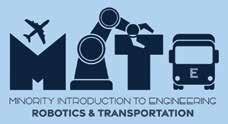
Students in the program have the opportunity to stay on campus in one of the residence halls and engage with students in various activities, as well as meet current undergraduate students, faculty and administration. Participants learn about engineering majors and the vast array of potential engineering careers available to them.
Listen to our podcast with Frank Cilluffo and at eng.auburn.edu/ginning
What’s a good day at work for Clint Lovelace? When he makes a positive impact on the lives of students.
“What courses should I take next semester?” “I’m struggling in school. Help me.” “I’m struggling with a family issue. Can we talk?” “What classes best prepare me for a career beyond Auburn?”
Students enter his office on the third floor of Shelby Center and leave with direction. It’s no wonder the manager of academic programs in computer science and software engineering (CSSE) was named as one of four Auburn University Employees of the Year for 2021-22.
“Every day is different,” said the Valley, Alabama, native who is pursuing a doctorate in higher education administration. “There are days where everything is great. There are days when a student is in crisis, and we find a way to fix it. It’s not always academics. I tell students when they first visit, we offer holistic advising — from orientation all the way through graduation. We will talk about their academics, but also their physical, mental and emotional needs. Typically, students come to their advisors first when there is a problem. Even if you can’t fix it, they develop a trust in you.”
The future of vaccine development is going to be faster, cheaper and more geared toward the needs of the developing world. The technology behind the vaccines of the future will be impacted by the work of Chris Kieslich, assistant professor of chemical engineering.
Kieslich is the Department of Chemical Engineering’s latest recipient of the Maximizing Investigators’ Research Award (MIRA) from the National Institute of General Medical Sciences, a branch of the National Institutes of Health.
Kieslich’s five-year, $1.87 million award for his work titled “Development of Computational Tools for Accounting for Host Variability in Predicting T-cell Epitopes” marks the department’s third MIRA in two years, alongside assistant professors Panagiotis Mistriotis and Robert Pantazes.
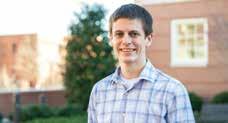
“What we’re working on through computation is making tools that would be useful for designing new vaccines with a variety of applications that could be developed faster or cheaper because they’re easier to produce and store,” Kieslich said. “In very basic terms, we are developing tools that understand the interactions between a pathogen, such as a virus or bacteria, and the receptors in the immune system.”
Assistant professor of chemical engineering Michael Howard received a threeyear grant from the National Science Foundation to investigate new strategies for making colloidal supraparticles, a soft material useful for applications ranging from catalyzing chemical reactions to creating brilliant structural coloration.
The grant, entitled “NSF-DFG Confine: Drying-induced Assembly of Colloidal Supraparticles from Anisotropic Nanoparticles,” was awarded more than $270,000.
This is a collaborative grant with Johannes Gutenberg University Mainz in Germany, where Howard’s collaborator, Arash Nikoubashman, will additionally receive approximately €180,000 from the Deutsche Forschungsgemeinschaft, or DFG, German Research Foundation.
A supraparticle is a micrometer-sized sphere consisting of many much smaller nanoparticles. According to Howard, the supraparticle packages and enhances the functionality of the nanoparticles into larger materials that are easier to handle.
“My research uses computer simulations and statistical mechanics to understand and design soft materials such as nanoparticles, polymers and composites,” Howard said. “An important focus for me is on ‘out of equilibrium’ problems where thermodynamic and transport effects compete to determine the material’s properties after processing.”
Listen to our podcast with Michael Howard at eng.auburn.edu/ginning

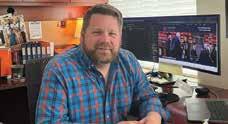
At the intersection of biology and engineering, Panagiotis Mistriotis, assistant professor in the Department of Chemical Engineering, is making a name for himself.
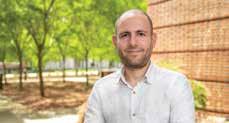
The National Institute of General Medical Sciences (NIGMS), a branch of the National Institutes of Health, recently awarded his laboratory a $1.87 million Maximizing Investigators’ Research Award (MIRA).
This will allow Mistriotis and his research group to further examine fundamental cellular processes to develop novel therapeutic interventions
Xiaowen Gong, assistant professor in the Department of Electrical and Computer Engineering, recently earned a five-year, $500,000 National Science Foundation Early Faculty Career Development (CAREER) Award.

His projectis titled “Towards Efficient and Fast Hierarchical Federated Learning in Heterogeneous Wireless Edge Networks.” The CAREER Award is the NSF’s most prestigious prize in support of junior faculty
Professor in ECE earns $175K NSF grant to optimize device
Even today’s gazillion-gig cell phones and high-speed computer GPUs can be stretched beyond performance capacities.
Deep learning (DL) and artificial intelligence (AI) programs, such as image and facial recognition, speech and language processing, personalized recommendations and many others now require large data sets that can inhibit desired levels of speed and accuracy.
against the initiation and progression of pathophysiological phenomena, including cardiovascular disease, aging and cancer.
“Over the next five years, we will develop new bioengineering tools to study how pressure forces affect cell movement and survival,” Mistriotis said. “The funds of the NIGMS MIRA provide a stable research environment that enables early-stage investigators like me to pursue ambitious and high-impact projects. This generous early-career grant will jumpstart my research career and allow me to make significant scientific discoveries in the field of mechanobiology.”
As a field of study, mechanobiology is concerned with the mechanisms by which cells sense and respond to mechanical
signals. He noted cells in the human body are constantly subjected to these signals, but researchers aim to learn more about how these signals impact cell behavior.
“The widely held view is that cells can sense and respond to these cues but our understanding of the underlying mechanisms remains very limited,” he said. “Our lab explores how physical forces convert into biochemical signals to influence cell behavior.”
said Gong, who specializes in wireless engineering.
who exemplify the role of teacher-scholars through outstanding research, excellent education and the integration of education and research within the context of the mission of their respective organizations.
“I’m so humbled to receive this honor,”
The unfortunate result is a memory bottleneck… your high-speed computer becomes all bark and no byte.
Mehdi Sadi, assistant professor in electrical and computer engineering, has a proposed solution he believes will optimize performance and decrease power usage without increasing device size.

Sadi will utilize emerging magnetic random-access memory and chiplet-based packaging technologies to optimally design on-chip and off-chip memory systems for AI/DL hardware. His proposal, “Design
“I’m very fortunate. There are so many other researchers who do excellent work but have not received this award. I view this award more as inspiration and encouragement for my future work,” he added.
Gong is the third Auburn Engineering professor to win the NSF CAREER award in the past year.
and System Technology Co-optimization Towards Addressing the Memory Bottleneck Problem of Deep Learning Hardware,” was recognized by the National Science Foundation (NSF), earning a twoyear, $174,923 grant.
$1.87M
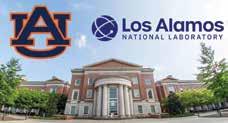
A five-year memorandum of understanding (MOU) executed in June by Auburn University and Los Alamos National Laboratory (LANL) is expected to provide enhanced collaboration in research, education and workforce development.
Together, Auburn and LANL personnel will:
• Work together to identify opportunities for collaboration on joint research proposals.
• Enhance Auburn University’s curricula and educational opportunities by leveraging LANL expertise.
• Improve LANL workforce-building, revitalization and retention through student recruitment, research
Japanese space craft Hayabasa2 spent about 18 months collecting samples on asteroid Ryugu, a 900-meter sand castle as it hurtled through space. What challenges were faced? What was the purpose of the mission? What lessons were learned that could be applied to future expeditions?
Masatoshi Hirabayashi, assistant professor in aerospace engineering, answers these questions in his book, “Hayabusa2 Asteroid Sample Return Mission: Technological Innovation and Advances.”
The book covers technologies necessary for space exploration missions, provides a unique focus on small body exploration missions and covers landing and impact experiments during the proximity operations of Hayabusa2.
“Asteroid sample missions have become popular over the past decade and will be more in the next decades,” said Hirabayashi, who directs Auburn University’s Space Technology and
collaborations, LANL staff interacting with Auburn faculty and students, LANL scientists offering seminars at Auburn, Auburn faculty offering seminars at LANL and exchange visits/ sabbaticals.
With a focus on cyber and critical infrastructure security, artificial intelligence and data analytics, the MOU will primarily involve the Auburn Cyber Research Center and the McCrary Institute for Cyber and Critical Infrastructure Security, along with other relevant faculty from the college.
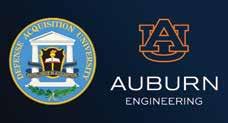
The Samuel Ginn College of Engineering continues to expand its growing list of industry partnerships through a recent agreement with Defense Acquisition University (DAU).
DAU delivers continuing education and support tailored to the needs of the defense acquisition workforce. These professionals are responsible for establishing agreements with defense contractors for U.S. armed forces’ equipment and technology. Through the DAU Strategic Partnership Program, these professionals now have the opportunity to apply their eligible DAU coursework toward an Auburn Engineering graduate degree or certificate.
Application Research Lab. He recently teamed with NASA’s Double Asteroid Redirection Test (DART) to smash the binary near-Earth asteroid Didymous and NASA’s Artemis rover mission (VIPER) to explore samples on the lunar South Pole.
“Before this book, there was no documented collection of engineering technologies, particularly for asteroid missions. Summarizing what we learned from the mission — the advances, challenges and how we solve those — this can be vital information for future generations … those who want to send spacecraft to asteroids,” he said.
Listen to our podcast with Masatoshi Hirabayashi and at eng.auburn.edu/ginning
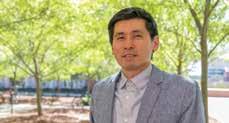
Auburn Engineering officially joined the College of Education in the partnership program in June.
Once a DAU student is enrolled in an Auburn Engineering graduate program that complements their specific workforce role and previous education, departments will review the student’s previous coursework and apply the credits that align with the graduate program. Students can transfer up to six eligible DAU credits and complete their degree online.

With a goal of increasing recruitment of Auburn Engineering students, the Engineering Office of Career Development and Corporate Relations (CDCR) descended upon the Auburn University Huntsville Research and Innovation Campus to host the inaugural Employer Summit in August. More than 60 representatives from 35 companies were in attendance to engage with college representatives, including current students, young alumni, CDCR staff and select faculty.
“The summit was designed to help Huntsville employers engage with Auburn University through recruitment, capstone projects and research,” said Apryl Mullins, CDCR assistant director for corporate relations. “In talking with employers since our office was created, we have noticed that it is often difficult for employers, especially smaller employers with not much name recognition, to know where to begin in navigating a large university and how to engage for recruitment and collaborating through projects and research.
“Our goal with this program was to facilitate relationships and open the door of Auburn University to these employers,” she added. “It is important to our office to work with companies to create the best opportunities for our students to receive valuable, high-impact experiences throughout college and employment options upon graduation.”


The Interdisciplinary Center for Advanced Manufacturing Systems (ICAMS) at Auburn University challenged area college students to an Additive Manufacturing (AM) Competition in which the teams would design and build a propeller for a submarine. This competition, which took place in August, is one of the educational and workforce training activities at ICAMS, partnered with the Industrial Base Analysis and Sustainment program through the Department of Defense.
Ten teams, including 31 Auburn Engineering undergraduate students and a team from Central Alabama Community College led by faculty members Pat Murphy and Josh Nelson, participated in the competition, which was held in Auburn University’s Design and Innovation Center located inside the Brown-Kopel Center. The competition objective required that the blades of the submarine propeller rotate on a shaft and that the propeller assembly must be fabricated entirely using one of the most prevalent additive manufacturing processes, fused filament fabrication, using a Prusa 3D printer.
Peter Liu, assistant professor in the Department of Industrial and Systems
Engineering and a member of the ICAMS leadership team, led the planning of the competition.
“The ICAMS Additive Manufacturing Competition is a new effort in the education and research initiatives of ICAMS, aiming to foster creativity and improve the skills of future engineers by leveraging AM research capability at ICAMS,” Liu said. “Through this competition, students learned computeraided design and operated 3D printers obtaining highly valued skills in advanced manufacturing.”
ICAMS Additive Manufacturing Competition winners were:
First place: James Shepherd — Senior, Mechanical Engineering Wilson Tynes — Junior, Mechanical Engineering
Second place: Central Alabama Community College
Going back to school has never been easier or more convenient.

More than 40,000 individuals are killed in motor vehicle accidents in the U.S. each year. While fastening seat belts reduces risk of injury or death, it is not foolproof.
“Despite various technological advancements over the years, thousands are found dead with their seat belts on every year,” said Shiva Nageswaran, a fifth-year doctoral student in industrial and systems engineering. “I’m trying to investigate what is happening and how we can change it. Seat belts are definitely the safest equipment protecting an occupant in a vehicle right now, but they need to be designed safer. We need to prevent as many fatalities as possible.”
Nageswaran’s study, “Significance of Seat Belt Buckled Release Force After a Rollover Accident,” made an impression on more than 70 faculty and industry professional judges, winning the 10th annual Graduate Engineering Research Showcase, sponsored by the college’s Council of Engineering Graduate Students on Oct. 20 in the Brown-Kopel Center Grand Hall.
A record 177 students — representing all departments within the college — participated in poster presentations, allowing them the opportunity to exchange ideas among peers and compete for cash prizes.


Auburn Engineering professors will soon have access to new and exciting research opportunities. The U.S. Air Force will soon have access to Auburn Engineering’s brainpower.
A recently-signed, five-year educational partnership agreement provides Auburn Engineering students and faculty an opportunity to collaborate scientifically with Air University at Maxwell Air Force Base in Montgomery — an arm of the U.S. Air Force — to expand and create knowledge, solve engineering-related problems and optimize existing modes of operation.
“The reputation of Auburn University and the Samuel Ginn College of Engineering transcends state and regional borders,” said Steve Taylor, interim dean of engineering. “Entities such as the U.S. Air Force recognize we produce some of the nation’s most gifted engineers and worldclass researchers, and our experience working with our nation’s defense sector makes this a perfect fit.”
The Southeastern Conference has released its 2022 Spring Academic Honor Roll and of the 88 Auburn student-athletes who earned a selection, four are enrolled in the Samuel Ginn College of Engineering.
The 2022 Spring SEC Academic Honor Roll includes the sports of baseball, golf, track and field, softball and tennis. It is based on grades from the 2021 Summer, 2021 Fall and 2022 Spring terms.
Listed below are Auburn Engineering’s student-athletes that earned recognition from the SEC, along with their majors:
Max Johnson — Mechanical Engineering
James Courson — Computer Science
David Edmondson — Mechanical Engineering
John Murray — Aerospace Engineering
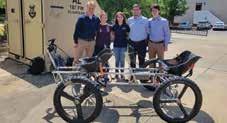
Five Auburn mechanical engineering students were among the winners at the recent NASA Human Exploration Challenge.
Clay Vinson, Julia Hancock, Lucas Vail, Shannon Minnich and Joel Eidson earned the challenge’s Project Review Award in a contest that asked students from 58 universities to design, develop, build and test human-powered rovers capable of traversing challenging rocky terrains found in the solar system. The challenge also tasked teams with performing mission assignments while negotiating a rocky course, including sample retrievals and spectrographic analysis.
“This year, students were asked to design a course that would mimic obstacles as if they were competing in Huntsville,” said Aundra Brooks-Davenport, activity lead for the challenge at Marshall Space Flight Center. “Ensuring team safety was a major factor in developing the design of their own obstacles. We are excited about the virtual competition and the opportunity it provided our teams.”
The Samuel Ginn College of Engineering was again recognized as a national leader in higher education, ranking among the nation’s Top 35 public institutions in U.S. News & World Report’s 2023 Best Undergraduate Engineering Programs for the 12th-consecutive year. The publication, which ranks undergraduate programs throughout the nation each fall, ranked Auburn Engineering No. 33.
“The Samuel Ginn College of Engineering is committed to providing the best student-centered engineering experience in America. We have invested significant resources into hiring renowned faculty, producing cutting-edge research that impacts lives, developing exceptional student-support programs, building and maintaining unrivaled facilities and providing new opportunities for experiential learning opportunities,” said Steve Taylor, interim dean of engineering. “This ranking is a testament to our continued commitment to excellence. It’s an honor to be consistently regarded as one the nation’s top engineering programs.”
The Auburn Engineering Office of Communications and Marketing took home two medallion awards and an award of excellence at the recent annual meeting of the Public Relations Council of Alabama (PRCA). PRCA is a statewide organization committed to promoting the professional and ethical practice of public relations in Alabama.

“These awards are a reflection of the amazing students, faculty, staff and alumni we represent,” said Austin Phillips, director of engineering communications and marketing. “It is an honor and a privilege to share the success stories of the college’s students, the cutting-edge research being conducted by the faculty, the hard work of the staff and the distinguished careers of our alumni. They truly epitomize the Auburn spirit.”
Three graduates from the Samuel Ginn College of Engineering have been named to the Auburn Alumni Association’s 20 Under 40 Class of 2022.
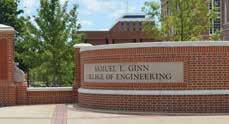
The 20 Under 40 recognition was established to recognize members of the Auburn Family for extraordinary

accomplishments, professional achievements or distinguished service to others. A total of 20 individuals were selected for the recognition. The three
Auburn Engineering graduates recognized this year were: Emily Traylor, ’10 wireless software engineering; Ashley Gann, ’05 aerospace engineering; and Brandon Young, ’10 electrical engineering.
Three Auburn engineers named to Auburn Alumni Association’s 20 Under 40
Five students in mechanical
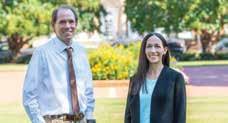
There is an established link between colorectal cancer diagnosis and obesity, but understanding why that link is present and how best to treat such a dual diagnosis is still not fully understood by doctors and researchers.
Thanks to a nearly $2.5 million R01 research award from the National Institutes of Health, an interdisciplinary team from three universities led by Elizabeth Lipke, the Mary and John H. Sanders Professor in Auburn Engineering’s Department of Chemical Engineering, and Michael Greene, associate professor in Auburn’s Department of Nutritional Sciences in the College of Human Sciences, will examine this link and aim to understand how best to treat these patients to improve clinical outcomes. Colorectal cancer is the third
most common non-skin-related cancer and the third leading cause of cancer-related mortality in the United States. Obesity is directly linked to an increased risk of death from colorectal cancer. Although overall colorectal cancer incidence rates declined from 1991-2011, they have risen recently in younger age groups and remain high in states with a high incidence of obesity.
“This is a very collaborative approach working both on the engineering side and on the biological side to make paired models of colorectal cancer,” Lipke said.
Through their combined expertise, the team aims to develop a toolset for
In 2021, Amazon and the National Safety Council launched a partnership and nationwide effort to reduce the incidence of musculoskeletal disorders (MSDs) in industry, and two Auburn Engineering professors have been named to the advisory council to support the initiative.

Sean Gallagher, the Hal N. and Peggy S. Pennington Professor, and Richard Sesek, the Tim Cook Associate Professor, both from the Department of Industrial and Systems Engineering, were named to the advisory council as safety experts. Both are professors in Auburn University’s Center for Occupational Safety, Ergonomics and Injury Prevention.
“It shouldn’t hurt to go to work, but for the millions of employees worldwide impacted by MSDs — the most common workplace injury — the chronic pain experienced from these ailments persists long after clocking
explaining a pathological link between obesity and colorectal cancer tumor progression.
“The physiology is different between people with obesity and those without. Not only is there a physical difference, but there’s a physiological difference and so maybe we can treat obese patients better if we better understood the link between obesity and the cancer,” said Greene.
“What we want to do is build new models that are better for drug testing, but also new models that can give us insight into the mechanisms between the link. We’re really trying to understand, mechanistically, why is obesity linked to colorectal cancer?”
Listen to our podcast with Elizabeth Lipke at eng.auburn.edu/ginning
out. That’s precisely why we launched the MSD Solutions Lab, a groundbreaking initiative of the National Safety Council, with the goal of preventing these injuries before they start,” said Corinne Towler, director of MSD Solutions Lab, National Safety Council. “In collaboration with an ever-expanding community of safety leaders, committed organizations of all sizes and academic experts, we’re already starting to move the needle in reducing global MSD risk and creating safer outcomes for workers, so they can live their fullest lives.”

Shiqiang (Nick) Zou, assistant professor of civil and environmental engineering, and his research team recently received a $533,000 share of a $2.5 million grant from the National Alliance for Water Innovation, a Department of Energy water research hub.
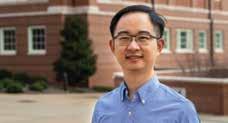
The three-year project, “Direct Electrochemical Reduction of Selenium to Achieve A-PRIME Water Treatment,” is led by the Lawrence Berkeley National Lab in California, with three universities receiving subcontracts: Auburn University, Rice University and Stanford University. A-PRIME stands for Autonomous, Precise, Resilient, Intensified, Modular and Electrified water treatment.
The team’s focus will be on harnessing electric power for the purpose of eliminating selenium pollutants from industrial wastewaters and agriculture runoffs. Selenium, in excess, can lead to chronic health problems, which is why it needs to be eliminated from water to meet U.S. EPA and World Health Organization regulations, according to Zou.
Currently, he said, there is no reliable and affordable solution to selenium pollution. The limited understanding of the health risks involved with high selenium intake and toxicity has led selenium to be inadequately regulated for over a decade.
“As an environmental engineer, I genuinely want to tackle this emerging environmental issue and help secure clean and safe water for our community,” Zou said.

“Safety
Emmanuel Winful has carried this belief since growing up in a Ghana gold mining town and it has shaped the way he practices safety.
As a health and safety manager in Auburn Engineering’s Office of Safety, Winful is dedicated to developing, organizing and implementing safety management system initiatives that foster a safer work and research environment for the college’s faculty and students. For his efforts, Winful was recently among the first recipients of the National Safety Council’s Diversity in Safety Scholarship.
Common safety hazards within an engineering college often stem from laboratory research, including chemicals, lasers, electrical devices and mechanical tools.
“Engineering pretty much has all of the hazards,” Winful said.
That’s why great consideration needs to be given to each experimental activity and the hazards involved. But finding that balance of developing trust from student and faculty researchers, and implementing safety guidelines without slowing research is delicate, Winful said.
Cheryl Seals, the Charles W. Barkley Professor in computer science and software engineering, was among the 30 academicians selected to Drexel University’s Executive Leadership in Academic Technology, Engineering and Science (ELATES) Fellowship program for 2022-23.
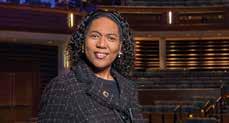
ELATES is a national leadership development program designed to promote women in academic STEM fields, and faculty allies of all genders, into institutional leadership roles. The cohort represents more than 25 institutions of higher education across the U.S. and Canada. ELATES Fellows include experts in engineering, mathematics and science, all of whom have significant administrative experience in addition to their scholarly accomplishments.
Seals was nominated by senior leadership for this intensive, yearlong program, which includes eight to 10 hours per week of personal and leadership development work as well as three series of on-site work in Philadelphia, home of Drexel University.
should be a mindset.”
Food distribution centers across Alabama have questions. Yin Sun, assistant professor in electrical and computer engineering, and a team of colleagues are searching for answers.

What food and supplies are most needed, where are they most needed – and when?
Excessive foods – including perishables –might be wasted if supplies are too great.
On the other hand, thin supplies could run out quickly and people depending on this service from their local food pantry might receive nothing. As the fifth-poorest state in the nation, 17% of adults and 23% of children in Alabama struggle with food insecurity, according to the Alabama Department of Public Health.
Sun is part of a multi-disciplinary research project, “Strengthening the Alabama Emergency Food Distribution System Using Machine Learning: Impact on Household & Community Food and Nutrition Security During Disasters,” across two Alabama universities aimed at solving this problem for the state.
“Many distribution centers don’t know how many people are coming to collect food,” said Sun, who is joined on the project by Rui Chen, Robert Zabawa, Eunice Bonsi, and Souleymane Fall, each from Tuskegee University. “Sometimes they have a high number of people come to collect food. Sometimes they have a low number. This matters greatly when you prepare boxes for people to come pick up.”
Auburn University is part of a $20 million collaboration among nine Alabama universities and one private firm to develop transformative technologies in plasma science and engineering, or PSE.
The five-year effort — which is being led by the University of Alabama in Huntsville — is funded by a grant from the National Science Foundation’s Established Program to Stimulate Competitive Research. The goals of the Future Technologies enabled by Plasma Processes initiative are to develop new technologies using plasma — the most abundant form of matter in the observable universe — in hard and soft biomaterials, food safety and sterilization and space weather prediction.
“This research directly impacts two of the largest industries in the state of Alabama, space and agriculture,” said Ed Thomas Jr., interim dean of Auburn University’s College of Sciences and Mathematics and project lead. “For more than three decades, Auburn has been a leader in plasma research, and we have one of the highest ratios of plasma physicists in our faculty in the entire nation.”
Auburn’s team includes: Saikat Chakraborty Thakur, Uwe Konopka, Evdokiya (Eva) Kostadinova, Yu Lin, Stuart Loch, David Maurer, Joseph Perez from the Department of Physics, Mary Lou Ewald, director of COSAM Outreach, Virginia Davis from the Department of Chemical Engineering and Amit Morey from the Department of Poultry Science.

The National Institute of Standards and Technology (NIST) recently awarded Auburn University’s National Center for Additive Manufacturing Excellence (NCAME) and the ASTM Additive Manufacturing Center of Excellence nearly $1 million to establish through computer vision and machine learning a datadriven framework for the non-destructive qualification of additively manufactured materials and parts for mission critical applications.
The framework will allow for the rapid identification of critical defects and the prediction of fatigue performance with non-destructive evaluation (NDE) data.
“Additive manufacturing (AM) has gained significant attention from key industrial sectors including aerospace, defense, automotive and medical due to its unique capability of fabricating customized parts with complex geometries on demand,” said NCAME director Nima Shamsaei, PhilpottWestPoint Stevens Distinguished Professor of mechanical engineering. “However, current AM platforms are still prone to producing parts with varying degrees of defects detrimental to the parts’ structural integrity, specifically in fatigue critical applications.”
NDE-based and prediction-based qualifications are key to expedited adoption of AM, said Shuai Shao, associate mechanical engineering professor.
Listen to our podcast with Nima Shamsaei at eng.auburn.edu/ginning
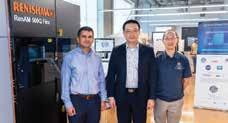
Researchers use machine learning to assist state food pantries with inventory
Yaeji Kim, a fifth-year graduate student in aerospace engineering, had the opportunity to learn essential skills for dealing with big data in astronomy-related fields, where she can apply this knowledge toward creating surface color maps of asteroids.

Kim was selected to attend the LSSTC Data Science Fellowship Program at Northwestern University in Evanston, Illinois in September.
“One of my current research projects is to understand surface alterations of near-Earth asteroids (NEAs) driven by their close encounters with Earth,” said Kim, a student in assistant professor Masatoshi Hirabayashi’s Space Technology Application Research (STAR) lab. “As an advanced research topic, I am interested in generating surface color maps of main-belt asteroids that include NEAs and non-NEAs to visually show how the surface will be affected by close planetary encounters. Comparing surface color maps can show surface differences between non-NEAs and NEAs and provides insight into the correlation between close interplanetary encounters to surface alterations.”

Internationally preeminent structural engineer Andrzej Nowak, chair of the Department of Civil and Environmental Engineering, has been elected to the prestigious Academy of Engineering in Poland.
The nomination was approved by the Academy’s General Assembly earlier this year. Nowak attended the formal induction in April in Kraków during the Academy’s ceremonial session.
“It’s a fantastic honor to have my work recognized by such an esteemed body in my native country,” Nowak said.
Established in 1992, Poland’s Academy of Engineering supports the development of modern technologies and technology transfer promoting Polish innovation in the country and abroad.
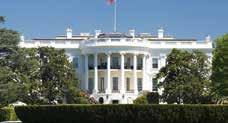
More than 700,000 cyber-related jobs in the U.S. remain unfilled. Frank Cilluffo, director of the McCrary Institute for Cyber and Critical Infrastructure Security at Auburn University, joined a team of private sector executives, cabinet members, federal agency leaders and university presidents in Washington in July to explore possible solutions to the problem.
The National Cyber Workforce and Education Summit, hosted by the White House, served as a call to action and charted “a path toward a more secure future in which Americans have the opportunity to raise the bar on cybersecurity through greater awareness, education and training.”
“This is one of the most significant security challenges facing the United States today and universities have a unique opportunity and responsibility to rise to the occasion,” Cilluffo said.
Many graduate students are expected to conduct experiments and run tests in the lab. Eventually, their advisor steps in and says, ‘Hey, can you write a paper about your results?’ However, limited and inconsistent guidance is often provided to graduate students on how to write that paper.
A multidisciplinary team of Auburn University scientists and writing experts, led by Russell Mailen, assistant professor of aerospace engineering and the project’s principle investigator, have a proposed solution. Their four-step program, “The
Student in CSSE earns EPSCoR graduate research scholar award
Hai Phan, a fourth-year doctoral student in computer science and software engineering, was one of just 36 graduate students from all academic disciplines in the state to win the Alabama EPSCoR Graduate Research Scholar Round 17 Fellowship — a $25,000 prize.
In collaboration with Anh Nguyen, assistant professor in computer science and software, Phan’s research, “DeepFaceEMD: Re-ranking Using Patch-wise Earth Mover’s Distance Improve Out-Of-
The National Science Foundation awarded an INTERN supplement to graduate chemical engineering student Antara Mazumder. The supplement will allow Mazumder to live and conduct research at Lawrence Berkeley National Laboratory in Berkeley, California to learn how to build
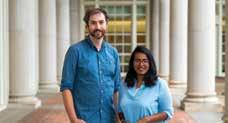
Writing SySTEM: A Systematic Approach to Graduate Writing Instruction and Intervention,” is designed to develop the communication/writing skills of researchminded graduate students, earning a three-year, $435,000 National Science Foundation Innovations in Graduate Education award.

“There is no science without writing what you learned. Otherwise, you were just in a
Distribution Face Identification,” uses stateof-the-art technology to better distinguish human faces in photographs — particularly in an age of face masks.
“Face identification systems are ubiquitous and they can make costly mistakes when identifying people,” Phan said.
“This technology often performs much worse on women, people with a darker skin and faces that are partially occluded with masks or sunglasses,” he added.
As a consequence, in 2021, some innocent people were wrongly arrested and denied unemployment benefits as the face
room doing stuff,” said Christopher Basgier, Director of University Writing. “It must be shared to be science.”
The project, which began in October, is initially open to aerospace engineering, civil and environmental engineering and biosystems engineering graduate students, with hope for expansion.
Four components — created by University Writing and adapted to engineering — are at the heart of the program, 1) workshops to teach writing skills and promote the recruitment of diverse participants into other components, 2) discipline-specific graduate study writing courses taught by engineering faculty, 3) peer writing groups, and 4) writing resources hosted on a publicly available web site.
solar fuel devices and test the membranes she has been developing as part of a NSFfunded project.
identification systems employed by the law enforcement incorrectly identified people.
To improve the accuracy of face identification Phan and Nguyen proposed a novel method to teach Artificial Intelligence systems to learn to compare two faces at multiple stages — comparing two faces as a whole and at fine-grained details.
Solar fuel devices are electrochemical cells that convert carbon dioxide into chemicals such as methanol and acetate, which are feedstock chemicals for a lot of the chemical industry and which are predominantly sourced from petroleum. Mazumder conducts her research under the supervision of Bryan Beckingham, associate professor of chemical engineering and Ginn Faculty Achievement Fellow.
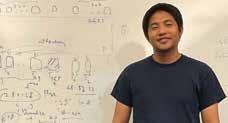
Can wireless augmented reality/virtual reality (AR/VR) devices perform at optimal, real-time speed? Shiwen Mao, director of the Wireless Engineering Research and Education Center, will soon find out.
His three-year, $993,319 study, “Learning based Resilient Immersive MediaCompression, Delivery, and Interaction,” was one of 37 selected by the National Science Foundation’s Resilient and Intelligent NextG Systems (RINGS) program.
RINGS is jointly funded by the NSF, the Office of the Under Secretary of Defense for Research and Engineering, the National Institute of Standards and Technology,
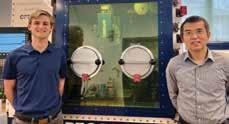
Materials engineering senior tapped for prestigious Department of Energy fellowship

John Snitzer, a senior in materials engineering, was recently awarded a prestigious graduate fellowship, the University Nuclear Leadership Program (UNLP), administered by the US Department of Energy, Office of Nuclear Energy.
Only 28 students across the nation receive this fellowship.
“This is a fantastic opportunity to collaborate with some of the experts in the field of nuclear science and engineering,” Snitzer said. “I am beyond excited to work in partnership with them to further the field.”
and several industry partners, seeking to accelerate research in areas that potentially have a significant impact on emerging Next Generation wireless and mobile communication, networking, sensing and computing systems.
Mao, who will explore innovative technologies to provide a unified media compression, communication and computing framework to enable real-time AR/VR, believes the study has the potential to make significant impacts within the research community and society.
Mao also recently earned a pair of international research awards.
His co-authored work, “TagSense: Robust wheat moisture and temperature sensing using a passive RFID tag,” earned the Best Paper Award at the IEEE International Conference on Communications in Seoul, South Korea. Also, Mao’s project, “Environment-adaptive 3D human pose tracking with RFID,” won the Best Demo Award at the virtual IEEE International Conference on Computer Communications.
“It’s a great honor to be recognized by these highly regarded conferences … these are two of the best conferences in our field,” said Mao, also a recipient of the IEEE Internet of Things Journal Best Paper Award for 2021. “This is a validation of our hard work.”
fellowship award,” Lou said. “This award demonstrates that Auburn Engineering offers excellent education and training opportunities to our students so that they can compete at a national level.”
The office’s primary mission, Snitzer said, is to advance nuclear power as a resource capable of meeting the nation’s energy, environmental and national security needs by resolving technical, cost, safety, proliferation resistance and security barriers through research, development and demonstration as appropriate. Snitzer has primarily worked under associate professor of mechanical engineering Xiaoyuan Lou.
“I extend my sincere congratulations to John to receive this prestigious DOE
UNLP works to attract qualified nuclear science and engineering students to nuclear energy professions by providing graduate-level fellowships awarded for graduate-level work leading to a master’s or doctoral degree in the fields or disciplines relevant to the Nuclear Energy and Department of Energy mission.
“This fellowship provides him an opportunity to work with the best scientists in our national laboratory system,” Lou said. “I am proud of John’s achievement knowing he is on the right track to becoming a future leader to solve our future energy challenges.”
Two graduate students in aerospace engineering, Lokesh Silwal and Abbishek Gururaj, were awarded scholarships by the Redstone Chapter of the Vertical Flight Society (VFS).

Silwal, a fifth-year doctoral student and past president of Auburn’s VFS student chapter, focuses his research on the experimental investigation of aerodynamic characteristics of rotor systems. He was awarded a $3,000 grant by the VFS chapter.
Gururaj, a fourth-year doctoral student and currently the vice president of Auburn’s VFS student chapter, was awarded a $2,000 grant. His research interests are in the field of experimental fluid mechanics and aerodynamics.
“This is a great achievement and recognition for Lokesh and Abbishek,” said Vrishank Raghav, assistant professor in aerospace engineering and VFS student chapter advisor. “Not only have they contributed significantly to the field of vertical flight, but they have also given back to the vertical flight community by serving in the local chapter.”
Gaurav Sharma, a doctoral candidate and Woltosz Fellow in aerospace engineering, was named 2022 Graduate Student of the Year by the Greater Huntsville Section of the American Institute of Aeronautics and Astronautics (AIAA).
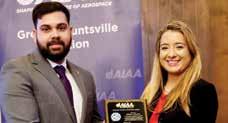
This award identifies the most outstanding graduate students in Alabama and Mississippi, especially those who go above and beyond in their technical accomplishments, active engineering research, service to the organization and active STEM community outreach. The Greater Huntsville Section extends over all of Alabama and the northern half of Mississippi.
“It was a real surprise and a feeling of gratitude when I found out,” said Sharma. “I am truly grateful to my advisor, Dr. Joseph Majdalani, for acknowledging my potential and providing me with a wonderful opportunity to join him and work with an amazing team of graduate students. I am equally honored to be part of the research program that supports America’s Space Plane and that my contributions to science will positively impact the future of aerospace engineering.”
Six civil and environmental engineering doctoral students along with Andrzej Nowak, chair of the Department of Civil and Environmental Engineering, recently participated in a special program sponsored by the National Agency for Academic Exchange in Poland and the European Union.
In May, students Jordan Nakayama, Tiana Lynch, Patricia Carcamo Barientos, Peter Collins, Fernando Cordero Montoya and Pablo Hurtado were among the nearly 500 designer, consultant, student, researcher and government official attendees at the 30th International Conference on Structural Failures in Międzyzdroje, which was organized by the faculty of Civil and Environmental Engineering at ZUT University in Szczecin.
“The sessions were a good mixture of practical and analytical presentations and posters,” said Nowak, who was recently elected to the prestigious Academy of Engineering in Poland. “In addition to active participation in the conference, the students visited the construction site of a tunnel under the Swina River in Świnoujście.”
Visit our magazine online at eng.auburn.edu/magazine to read more of these stories.

There’s always been something special about Auburn. Generations of students have come to love the Auburn Experience. And for alumni like K-Rob and Marcia Thomas, both 2001 graduates, creating a legacy through a planned gift to Auburn allows them to create similar experiences for future students. As you plan for the future, please consider leaving Auburn in your estate plans. Contact our gift planning specialists to learn how you can create a meaningful and tax-saving gift that will impact Auburn for generations.
Simple ways to create your legacy at Auburn
• Make a gift through your will or living trust
• Designate Auburn as a beneficiary on a bank or retirement account
• Give Auburn a life insurance policy you no longer need

• Make a gift that pays you a fixed or variable income
• Donate appreciated assets and receive a generous tax break


This year marks the 150th anniversary of Auburn’s reorganization under the Morrill Act from East Alabama Male College into the Agricultural and Mechanical College of Alabama, which established the Colleges of Agriculture and Engineering.
On a late Friday afternoon in September, in the shadow of the building where Auburn’s cornerstone instructional programs were born, the year-long celebration began.
More than 450 College of Agriculture and Samuel Ginn College of Engineering alumni donors gathered on Samford Lawn to mark the historic occasion at an event featuring student and alumni speakers, as well as addresses from college and university administrators including former Dean of Engineering and current Auburn University President Chris Roberts.
“When choosing a location for this milestone event, we decided this was the perfect place to celebrate the two colleges that have meant so much to this university, our state and even our nation,” Roberts told attendees.
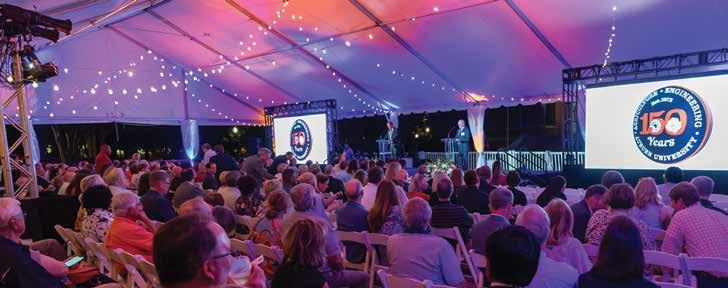
“Under the Morrill Act in 1872, Auburn University was reorganized as the South’s first land-grant institution. While we say that term a lot, it is an important one, and its purpose speaks to the mission of everything we do,” he added.
And Auburn’s Colleges of Agriculture and Engineering have done a lot.
“If we look back 150 years to this very place where we are standing, we would see a completely different landscape,” Interim Dean of Engineering Steve Taylor said. “The vast contrast in the standard of living between 1872 and today is a testament to the combined power of agriculture and engineering. One hundred fifty years ago, Alabama was just beginning to industrialize, but our ability to produce and distribute food and fiber for this industrial growth was not ready to meet the demands of a growing state. Auburn University played a monumental role in the way our region developed, and many of the technologies developed through the Colleges of Agriculture and Engineering changed the landscape of the nation — literally.”
An early, major example of that role was an initiative by the Department of Biosystems Engineering, which is jointly administered by both colleges, that made national news in the mid 1920s, an era in which using electricity to boost farm production was still purely theoretical in every state… but one.
The headline that ran in papers across the state:
Auburn Engineering’s partnership with Alabama Power was the first cooperative electrification development agreement between an agricultural engineering department and an electric power company.
SAMUEL GINN COLLEGE OF ENGINEERINGIn 1872, Auburn got a new name. And a new purpose. The world hasn’t been the same since.
“API JOINS POWER COMPANY IN PLAN TO ELECTRIFY FARMS, WILL PUT ALABAMA IN FRONT.”
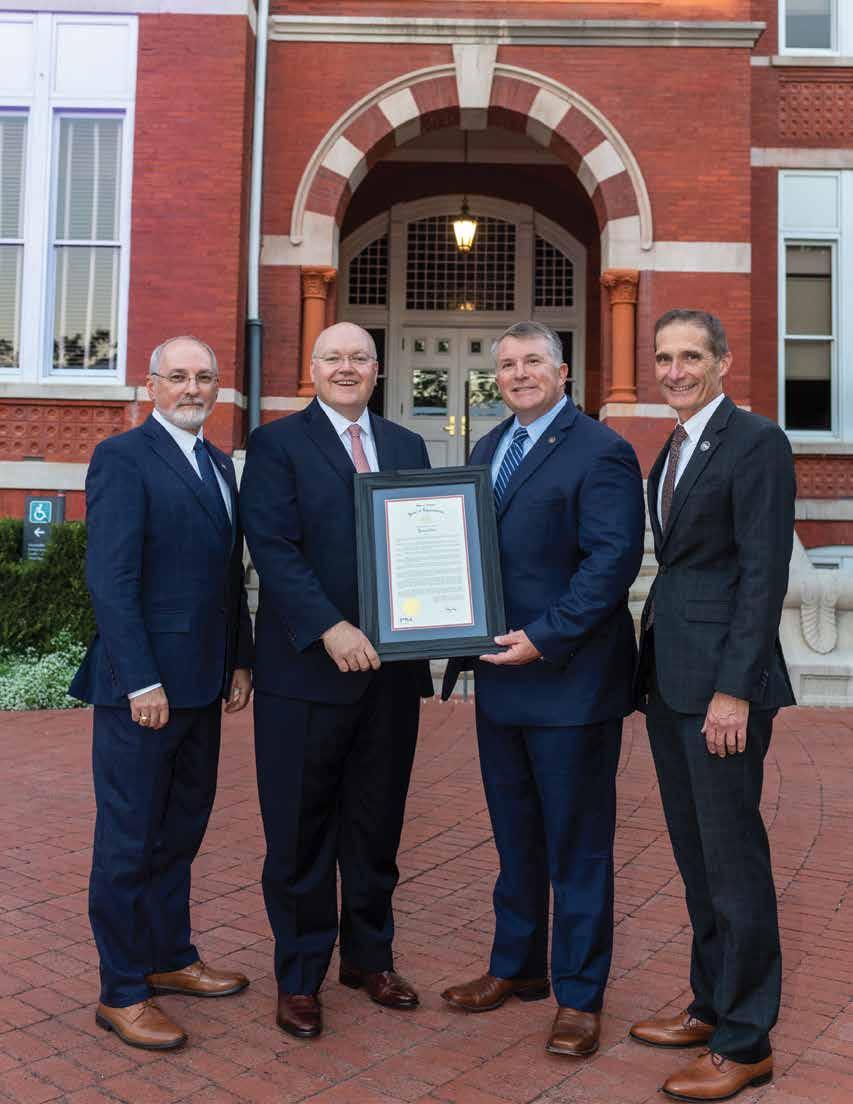 Samuel Ginn College of Engineering Interim Dean Steve Taylor, Auburn University President Chris Roberts, State Rep. Joe Lovvorn and College of Agriculture Dean Paul Patterson pose with an Alabama House resolution commemorating the 150th anniversary of agricultural and engineering education at Auburn.
Samuel Ginn College of Engineering Interim Dean Steve Taylor, Auburn University President Chris Roberts, State Rep. Joe Lovvorn and College of Agriculture Dean Paul Patterson pose with an Alabama House resolution commemorating the 150th anniversary of agricultural and engineering education at Auburn.
That chapter in the story of Auburn Engineering is one of many vividly told in “They Came from Auburn: A History of Engineering in the New South” written by Art Slotkin, a 1968 aerospace engineering graduate who has penned 10 books on Auburn during the past 12 years.

“What repeatedly struck me while researching and writing this book was the core conviction that defined the growth of engineering at Auburn, which was that engineering education was absolutely essential for the growth of the region and the nation,” Slotkin said. “Early engineering faculty knew that the hard work that went into the engineering discipline — the hard work that it would take young men and women to earn an Auburn Engineering degree — was the hard work necessary for the state and the country to reach its potential.”
Published by the Samuel Ginn College of Engineering, Slotkin’s book will be available in May 2023.
More than 450 College of Agriculture and Samuel Ginn College of Engineering alumni donors gathered on Samford Lawn to mark the historic occasion at an event featuring student and alumni speakers, as well as addresses from college and university administrators.
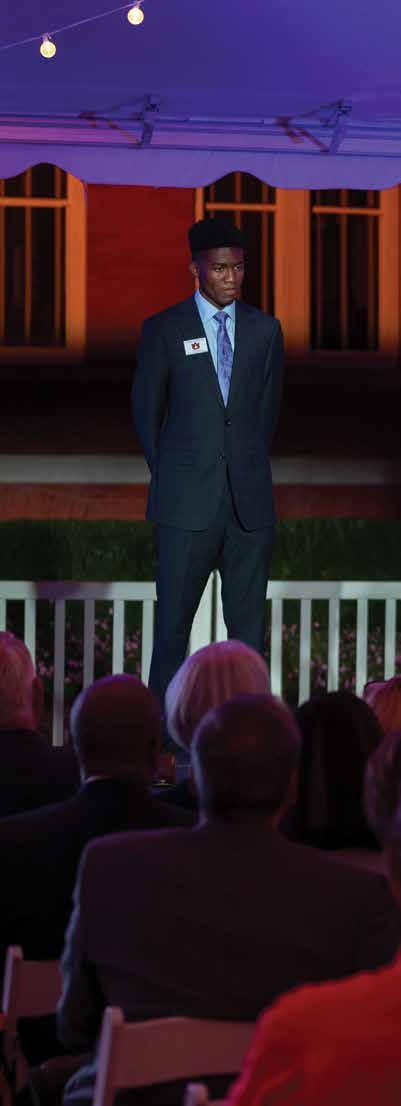
Visit our magazine online at eng.auburn.edu/magazine for videos and a photo gallery of this story.
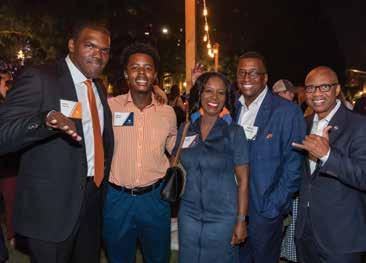
1872 Awarded first undergraduate bachelor’s degree of engineering to B.H. Johnson 1908 Named the College of Engineering with the inclusion of civil, electrical, mechanical and mining departments 1913 Formed the Department of Chemical Engineering 1923 Maria Rogan Whitson becomes first female graduate, earning a degree in electrical engineering 1930-1932 The first courses in aeronautical engineering were offered and taught in the Department of Mechanical Engineering; name changed to the Department of Mechanical and Aeronautical Engineering 1945 Now a school, Auburn Engineering is reorganized into five departments: aeronautical, civil, electrical, industrial and mechanical, and two management programs: aviation and industrial 1965 Materials engineering becomes an official degree program







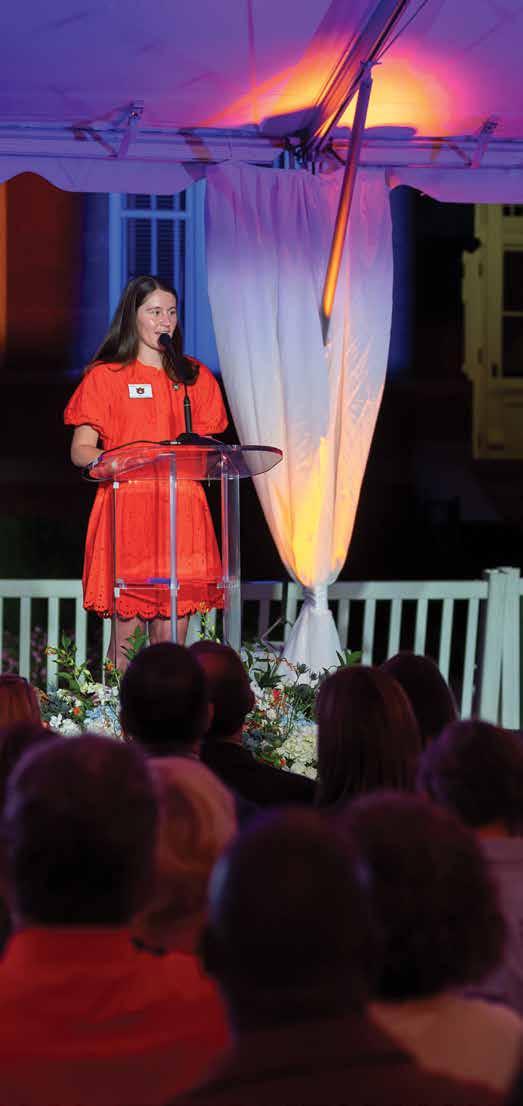
“The college overcame many, many struggles to get to where it is today,” Slotkin said. “There were financial struggles, cultural struggles, a Great Depression, two world wars, an unexpected accreditation crisis. But learning about how the college didn’t just survive, but thrived, in the face of adversity has made me even prouder to be an Auburn engineer.”
It’s made Taylor even prouder to lead Auburn engineers.
“The people whose names are on some of our historic buildings would be proud of what has been done inside them,” Taylor said. “Dean Wilmore laid the foundation for the Department of Aerospace Engineering in 1930 when it was just focused on aeronautics and aviation. A few decades later, what did you see? Auburn Engineering graduates in space, Auburn Engineering graduates putting man on the moon. And now this college is helping the country return to the moon. It’s leading the charge to Mars.”


And, of course, there’s that 1982 industrial engineering graduate from Robertsdale.

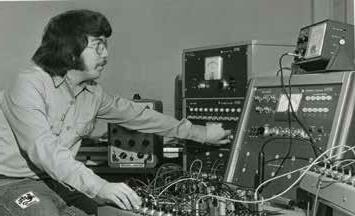
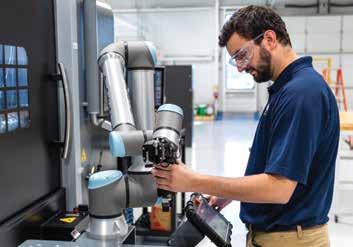
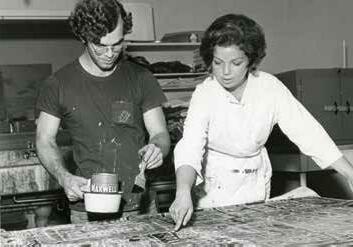
“Exactly,” Taylor said. “Tim Cook, an Auburn engineer, leads the largest company in the world. I think that tells you something about the quality of education we provide, about the impact the Samuel Ginn College of Engineering continues to have across the country and across the world.”
Paul Patterson, dean of the College of Agriculture and director of the Alabama Agricultural Experiment Station, agrees.
“As we like to say in the College of Agriculture, ‘this is the work that makes the world work,’ and I know the same can be said for engineering,” Patterson said. “For the past 150 years, and even now, the Colleges of Agriculture and Engineering have not worked in silos. We have worked together on infrastructure, environmental sustainability, food, water, energy and the natural resources that keep the world moving. Our two colleges work in tandem to ensure that Auburn University is a source of knowledge and action for our communities, region and state.”
Though the theme of the sesquicentennial festivities celebrated past accomplishments, much of the night focused on both colleges’ present and future research thrusts, from combating biological threats to the state’s farms, to combating cyber threats to the nation’s infrastructure.
The College of Agriculture remains an international leader in animal nutrition and welfare. In addition to creating stronger plant varieties and animal breeds, agriculture faculty are developing new technologies and practices to make foods safer, enhancing strategies to advance environmental conservation on farms and throughout communities, and providing farmers with innovations that will secure higher yields with fewer resources. The Samuel Ginn College of Engineering, meanwhile, continues to deliver technologies for safer and more efficient transportation systems, develop commercial space applications, defend the nation against foreign and domestic threats, bolster American cybersecurity and speed the growth of American industrial and manufacturing sectors. The college has also taken the lead in advancing the pulp and paper and chemical refining industries; provided affordable and reliable electrical power; revolutionized wireless communications; and provided safe and abundant drinking water and effective sanitation systems.
“We have a great vision for the next 150 years for Auburn University,” Roberts said in his closing remarks. “The colleges of agriculture and engineering are fundamental to that vision. As history has shown us, Auburn Agriculture and Engineering graduates are change-makers. And our future is only brighter.”
1984
The Department of Computer Science and Software Engineering is established
1998
Department of Agricultural Engineering, formed in 1919, changes name to Department of Biosystems Engineering to reflect its mission and scope 2001

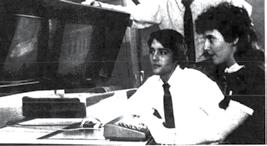
College is renamed as the Samuel Ginn College of Engineering in honor of his vision and philanthropy 2002

College offers the nation’s first wireless engineering degree


2005-2011
The Shelby Center for Engineering Technology is constructed, housing the Department of Industrial and Systems Engineering, the Department of Computer Science and Software Engineering, labs, classrooms and administrative areas
2019
The Brown-Kopel Engineering Student Achievement Center, housing flexible classrooms, computer laboratories, study rooms, a cutting-edge makerspace, project incubators and more

150 YEARS!
Scan the QR code to read more about our past, present and future.
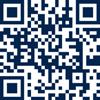
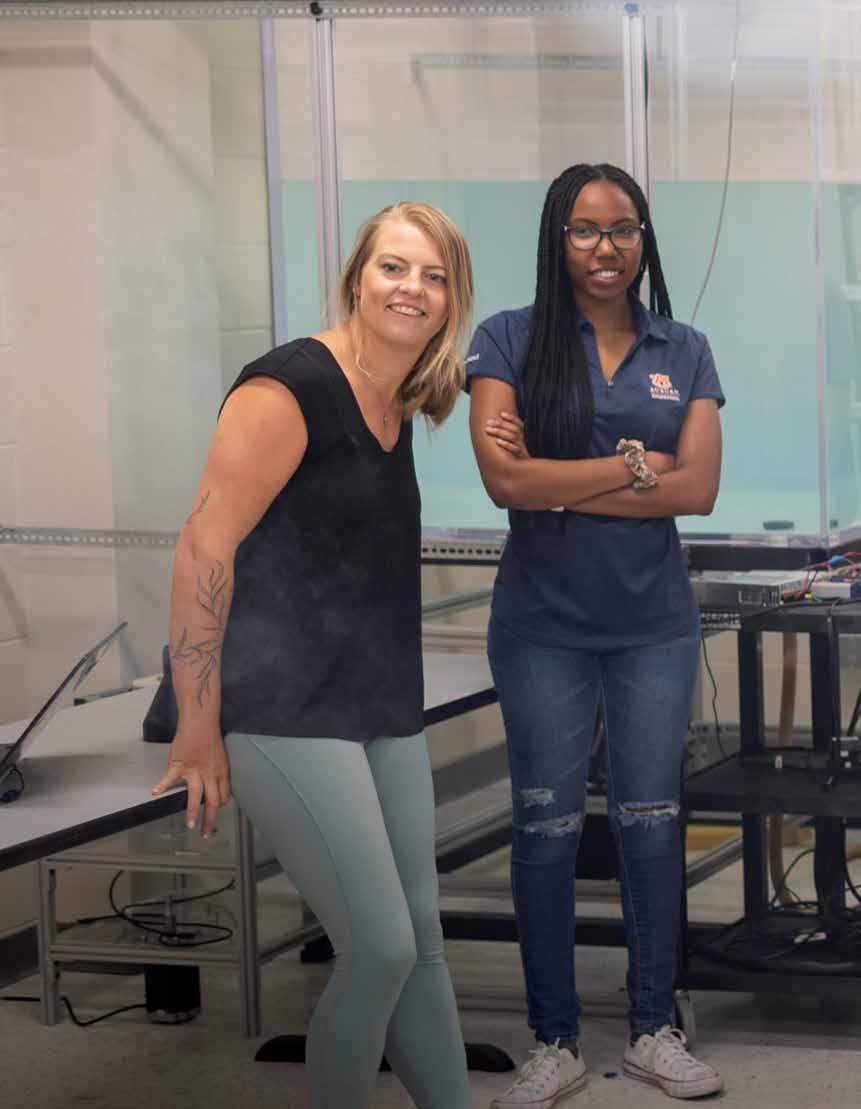

It was late September 2020. They’d ordered 300 coloring books, just in case.
It would probably be too many — they were hoping it might get 100 people to register — but Sydney Riley, outreach administrator for the Samuel Ginn College of Engineering’s Office of Recruitment, K-12 Outreach and Scholarships since 2017, figured she could take the leftovers to local classrooms now that schools were returning to in-person attendance. Teachers would probably like that.
Promotion was minimal. Just a simple video for Facebook showing some of the stuff inside — pictures of microscopes and gears to color, graph paper to design with and some engineering-related word searches.
Jessica Taylor, the office’s manager and director of recruiting and scholarships, volunteered her daughter, Ally, to star. Ally was 4, right around the target age. They had her run to open a mailbox, then jump for joy over getting her own mail — getting something fun. It was short. It was cute. And it was viewed 60,000 times.
It’s still hard for Riley to believe.
“At first, I thought there might be something wrong with the software,” she said.
Three hundred signups. Six hundred signups. One thousand.
“It was crazy,” she said. “I kept texting Jessica with updates. Within hours I was asking her ‘should we shut this thing down?’”
Finally, after two days, they did. They had to. Three hundred people hadn’t requested a book for their kids — 3,000 people had. And, in the process, signed up for the idea Riley had been brainstorming since joining the office in 2017, the idea that probably illustrates the unique, innovative lengths the office is using to recruit Auburn engineers better than anything else: the Future Engineer Club.
“We thought that parents would probably be eager for something like this, especially during the early days of COVID. We just didn’t know they would be this eager.”
There are members of the Future Engineer Club in Japan. There are members in Puerto Rico. There are members in middle school. There are members in kindergarten. There are members in diapers.
Seriously?
Riley smiles.
“Seriously,” she said. “We actually have several 6-month-olds in our system right now.”
Taylor couldn’t be prouder.
“We’re now at a point where we’re basically building our own recruiting pipeline, and that pipeline now starts with the Future Engineer Club,” she said. “Our office is just four people, but we’ve

really scaled up our recruiting, outreach and scholarship efforts over the past few years.”
By that she means more than the Future Engineer Club. There are more campus tours than ever, a bigger presence at college fairs and wherever else Andrew McGill, the office’s student recruiting administrator, thinks he can find prospective students. And more events — way more.

Thanks in large part to Riley, offerings have broadened. Opportunities have expanded. The office now hosts more than 25 recruiting outreach events, all tailored for specific demographics. There are summer programs, such as the Auburn Engineering Expo for high-schoolers and the Senior Tigers Camp for rising 12th-graders. There’s the egg drop contest for K-8th-graders in the spring, plus InspiHER, designed to encourage middle school girls to explore engineering through hands-on activities. There’s the GRAND Engineering Showcase geared to show K-6th-graders how engineering can help solve the world’s problems. The list goes on.
So do the scholarships. Ten years ago, the office awarded 928 scholarships to incoming students totaling $2.08 million. Today, those numbers have more than doubled.
“We facilitated the awarding of 1,774 scholarships and $4.75 million in scholarship dollars this year,” Taylor said. “Our office works with thousands of prospective students each year. We want them to have the opportunity to pursue their dream of becoming an Auburn engineer. These scholarships are impactful. Students are able to attend and remain at Auburn because of our generous alumni and friends, and we work closely with the academic departments and the Office of Advancement to make this happen.”
Taylor’s also quick to point out the college’s new virtual campaign. In early 2020, her office launched a robust virtual tour of the
engineering campus that, due to COVID, couldn’t have come at a better time.
“We were the first unit on campus to do that,” Taylor said. “It’s been such a valuable tool. It’s amazing to see how many people from across the world have taken a virtual tour of the college. It’s opened up opportunities we couldn’t have even planned for, like the outreach opportunity with the school in Knoxville.”
Late last year, a second-grade class at Emerald Academy, a charter prep school in Knoxville, Tennessee, emphasizing STEM initiatives, adopted the Samuel Ginn College of Engineering as a sort of sister school, thanks to the wealth of resources teacher Kevin Ickles found on the office’s website. Ickles connected with Taylor and Riley in hopes of also setting up a Zoom call for his students to ask questions about Auburn Engineering. Riley had a better idea.

“It just sounded like a great opportunity that could be even more than just a Zoom call,” Riley said. “I mean, we did the Zoom thing, too, at first, and they did the virtual tour. But we were so honored that they would want to get to know more about Auburn Engineering, we also asked if we could actually come and see his class.”
Ickles said absolutely and Riley hit the road, coloring books, other K-12 outreach materials, shakers and jugs of Toomer’s Lemonade in tow.
“It was such a great trip,” she said. “I was able to perform some engineering demonstrations for them in their class like the catapult and the slingshot car.
I also got to teach them all how to say ‘War Eagle’ and how to cheer when the eagle flies around the stadium.”
She recently returned from her second visit to Ickles’ class.
“I think that’s such a great example of our office’s work ethic,” Taylor said. “I don’t mean to brag, but at the same time, I kind of do. We are doing something that universities in these students’ own state and even their own city aren’t. The vision of tying our outreach efforts to recruiting has really transformed our ability to educate the next generation of Auburn engineers. That idea has really broken new ground. I don’t know another engineering school in the country doing what we’re doing on this scale,” Taylor said.
And all it jumpstarted with a coloring book.
“We were using the book as a way to launch the club, but parents were also signing up for regular, do-it-yourself engineering activities for their students to receive throughout the year,” Riley said. “There’s the coloring book, there’s college readiness pamphlets, do-it-yourself engineering activity postcards and more. We want to engage with them as much as we can. Once they reach 9th grade, they receive a Future Engineer graduation certificate and a letter introducing them to our recruiter, Andrew McGill.”
Even though its impact on applications and enrollment obviously won’t be felt for several years, Riley said the new initiative is already paying tangible dividends, specifically with event registration.

“We held InspiHER in April and I know that plenty of attendees learned about it directly through the Future Engineer Club,” she
said. “That’s a great feeling because part of my job is introducing students to the idea of engineering in general, but, obviously, we’re trying to get them to Auburn. Tracking a kindergartner, or a 3-yearold or 4-year-old is difficult. But that’s one thing that makes our office unique. We’re actually doing it, we’re putting in those efforts. We currently have 5,000 students from around the world — or I guess I should say kids, because some aren’t actually students yet — registered in our Future Engineer Club.”
“And I’m looking forward to meeting them one day,” McGill said.
McGill doesn’t credit his success as the office’s recruiter — “I’m kind of like the closer,” he said — to the energy he brings to the job. He doesn’t credit it to the long hours pounding the pavement and shaking hands at college fairs and receptions all over the country, or at the Cookies and Cupolas events where admitted students can mingle and network with Auburn Engineering student ambassadors, or during “Life as an enGINNeer” days that allow prospective underrepresented students to experience a personalized day in the life of a current Auburn Engineering student. He credits it to the product he has to sell.
“What I really try to hit home for choosing Auburn University in general is the Auburn Family, and how real it is, but that also applies to engineering,” he said. “We’re always talking about Auburn providing the best student-centered engineering experience in the country. That’s not just some slogan. We have invested in the resources to actually provide that, to provide a collaborative experience instead of four years of competition with your classmates, which seems to be the norm at other schools. That really resonates with a lot of students.”
It definitely resonated in Indianapolis in October 2021.
Auburn’s Autonomous Tiger Racing team was competing in the first ever Indy Autonomous Challenge at the Indianapolis Motor

Speedway. Thinking that enough engineering-minded highschoolers would be in attendance to make it worth his while, McGill made the trip. He set up shop outside the Auburn garage. Students stopped by to check out the team’s car. McGill introduced himself, handed out some of the slickest information packets around, and did his thing.
The gamble paid off.
“Two of the students I met there are freshmen right now,” McGill said. “One of them is from New Orleans. When she came for her tour, she brought us a King Cake.”
Another testament to McGill’s tactics is the roll of the freshmanlevel class he teaches, Engineering Success Strategies.
“There are 17 students in that class right now, and I met personally with 13 of them as recruits last year,” he said. “That’s rewarding. And it’s so great to already have that relationship when they get here.”
For the past two years, a lot of those relationships have started with Brooke Chandler, the office’s administrator for academic programs, and the first face people see when they walk through the doors of the Student Services office suite in the Brown-Kopel Center.
“I love sitting there right where people first come in because I’m a huge family person, and that’s what I want people to feel when they come here — to feel part of our family, the Auburn Engineering family. That’s what makes me feel good. That’s what I take pride in,” Chandler said. “I talked with one family for an hour and a half
one time. Their student had come to E-Day but they still just wanted to know more. They actually lived just down the road from Auburn and probably could have come back whenever they wanted, but I wanted them to feel that we cared enough about them to personalize the experience for them as much as we would have had they flown in from California.”
Another aspect of the job she takes pride in?
The mail — the massive, massive amounts of mail — and the welloiled team of student workers she’s cultivated since joining the office in 2021 to help get it out the door.

“I mean, we recently sent out 50,000 pieces of recruiting material, and we really try to get every little detail perfect,” she said. “Pieces of mail can wind up meaning the most to people, whether it’s a postcard to a kindergartner or a list of resources available to transfer students.”
“Or,” Riley chimed in, “a coloring book.”
“Exactly!” Taylor shouted. “Please just order more next time.”
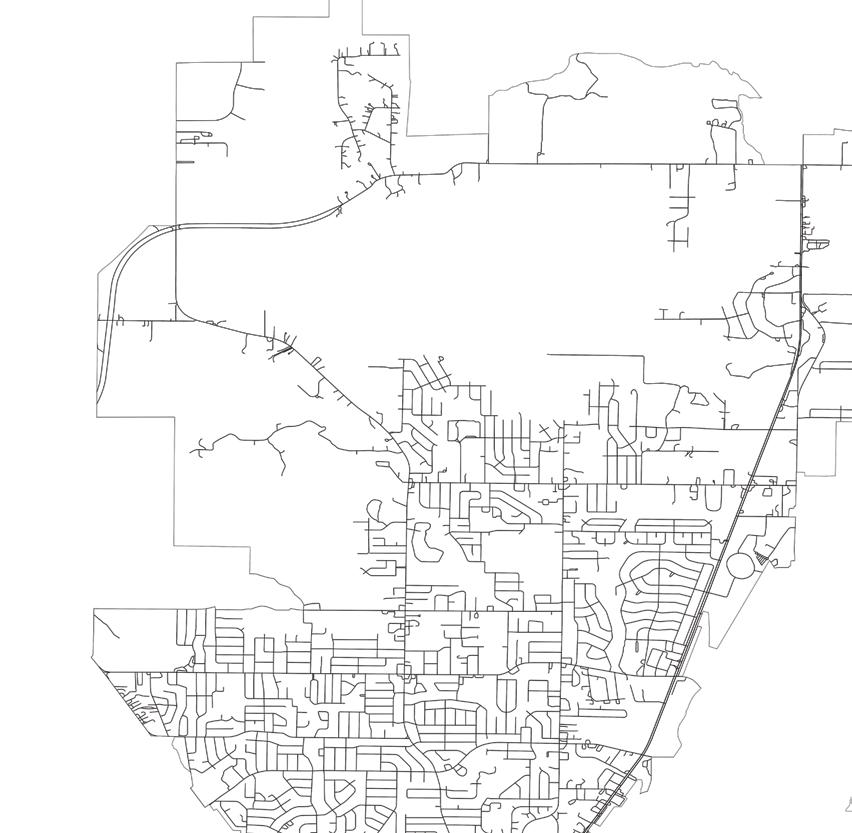
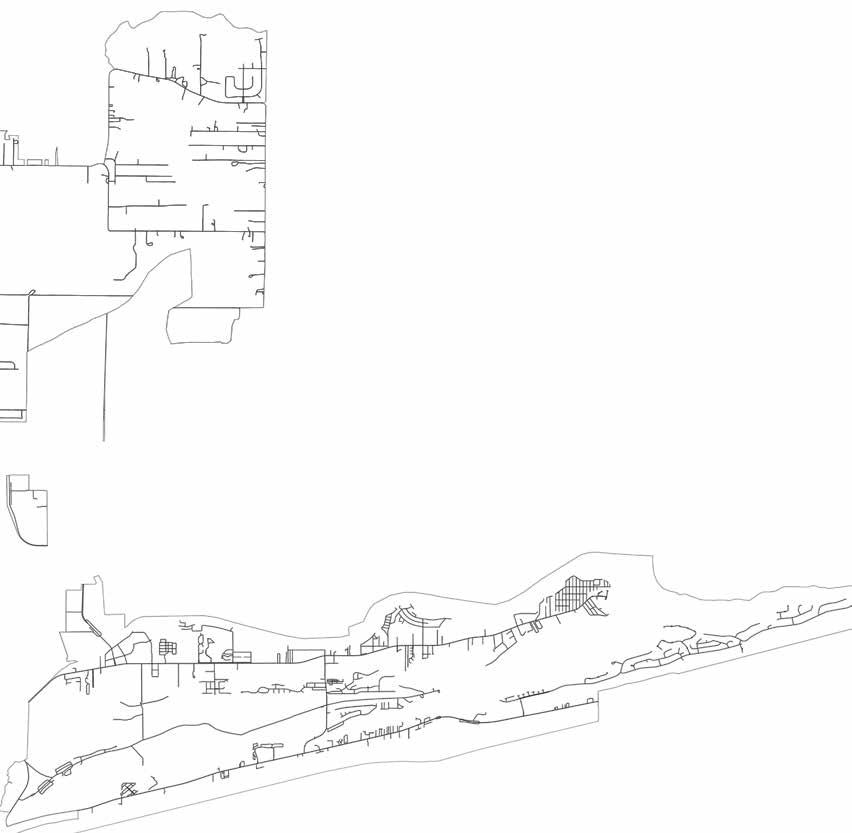
Auburn University expanded its footprint and opened its doors to a new facility in Huntsville in October with the grandopening celebration of the Research and Innovation Campus.
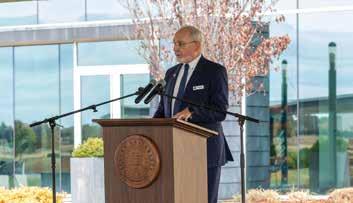
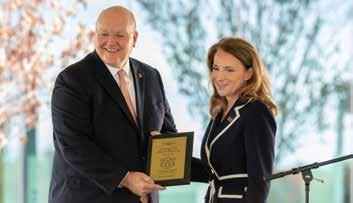
The 9-acre property, located at 345 Voyager Way NW in Huntsville’s Cummings Research Park, is in close proximity to numerous defense and aerospace collaborators, as well as the Bridge Street commercial development and the Gate 9 entrance to Redstone Arsenal.
“Much like Neil Armstrong and Buzz Aldrin did in 1969, today is a monumental day for Auburn as we plant our flag in Huntsville,” said Steve Taylor, interim dean of Auburn’s Samuel Ginn College of Engineering. “We might even say that a different eagle has landed.”
The property, which formerly housed LogiCore, is well equipped to support applied research and development work for Huntsville/ Redstone customers as well as hosting alumni and advancement events. Designed to foster a new era of interagency and
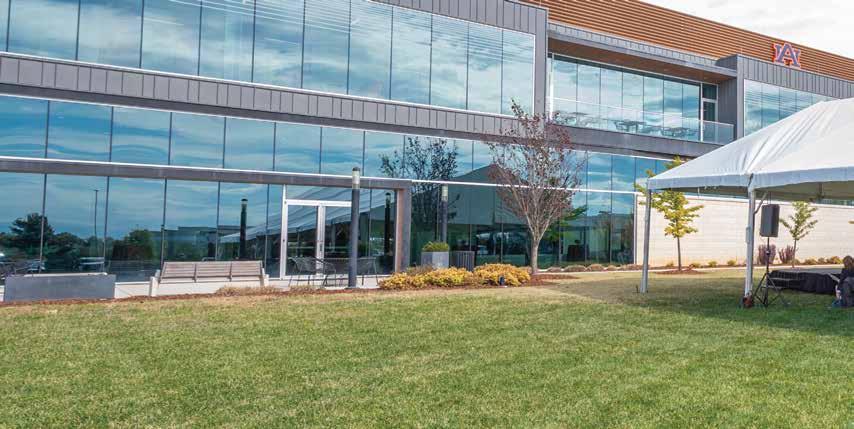
interdisciplinary collaboration necessary to secure the nation into the next century, the Auburn University Research and Innovation Campus will serve as a state-of-the-art, multi-million-dollar collaboration engine, conference center and research space that extends Auburn’s expertise and next-generation resources to the defense, space and law enforcement agencies.
“The Auburn University Research and Innovation Campus will be where today meets tomorrow,” said Auburn University President Chris Roberts. “Huntsville has been, and will continue to be, one of the hotbeds for our graduates to work, our faculty to partner and our students to explore. The facility will fast-track career connections that change the world, not only through the opportunity for next-generation cross-domain collaboration among agencies, but by supplying our partners access to Auburn’s mostpromising young minds.”
Experimentation with co-located laboratories will allow Auburn research professionals and students to conduct cutting-edge research and development across a range of technology readiness levels to help customers overcome national security, aerospace and biotechnology challenges. These laboratories will facilitate expansion in Huntsville of high-profile Auburn research programs such as advanced manufacturing, additive manufacturing,
biotechnology, quantum metrology, cyber and critical infrastructure security, and assured position, navigation and timing. To elevate Auburn’s ability to conduct space research, facilities are available for use as an operations center for NASA, DOD and private sector missions.

“As the largest city in the state, Huntsville is dedicated to also being the leader in jobs and economic development,” said Huntsville Mayor Tommy Battle. “Across the defense, aerospace, law enforcement, biotech and other sectors, Huntsville is quickly becoming a global leader in innovation, research and development as we unite our rich intellectual capital with new opportunities, such as this partnership with the Auburn University Research and Innovation Campus.”
Rose Allen, a 1985 Auburn industrial engineering graduate who serves as president of deciBel Research and formerly as chair of the Huntsville/Madison County Chamber of Commerce, also welcomed the Auburn University Research and Innovation Campus to the Rocket City.

“As the president of deciBel Research and someone who has spent their entire career in space and defense, I’ve seen firsthand the impact Auburn and its graduates have had on this community,” Allen said. “This is a special place made up of the brightest minds in the nation who are committed to making our world a better and safer place to live. And Huntsville just got better because Auburn is here.”
Mike DeMaioribus, who retired from Dynetics in 2016 as executive vice president of business operations and currently serves as the Auburn University Board of Trustees’ District 8 representative, said he is thrilled
“Our hope is this facility will quickly become the primary connection for the Huntsville community to Auburn University and will be the go-to destination for government and industry entities in the area looking to meet in an unbiased, trusted location for technical interchange meetings and other events,” DeMaioribus said.
In addition to the research and technical aspects, the Auburn Research and Innovation Campus also showcases rotating exhibits from the university’s Jule Collins Smith Museum and original works by famed artist Gamaliel Rodríguez.
“In this building, we will also find limitless inspiration in humankind’s greatest achievements, as told through art,” President Roberts said. “This facility is for everyone… Our hope is that you, too, will call the Auburn University Research and Innovation Campus in Huntsville home.
Visit our magazine online at eng.auburn.edu/magazine for a video and photo gallery of this story.
to see Auburn expand its partnership with a community he’s called home for more than 60 years.Auburn University’s Board of Trustees approved a project in September to build a Gulf Coast Engineering Research Station in Orange Beach.
The building, which is being constructed on land provided by the City of Orange Beach on Terry Cove off Perdido Bay with direct access to the Gulf of Mexico, will consist of laboratory, office and collaborative meeting spaces. The project will provide dedicated space for research of coastal environments and communities of the Gulf Coast, while also providing collaborative opportunities with other Marine Environmental Sciences Consortium institutions.

“We are thrilled to announce this new endeavor to further Auburn University’s mission as one of the nation’s premier land-grant universities, and we are extremely appreciative of the support of the Board of Trustees and the president’s office,” said Steve Taylor, interim dean of Auburn’s Samuel Ginn College of Engineering. “This facility will expand collaborative opportunities with our friends and partners with the City of Orange Beach, the University of South Alabama and other regional institutions and industries as
we work together to study, develop and implement infrastructure resiliency, environmental protection, restoration, sustainability and conservation actions that will continue to improve the quality of life and enhance economic advancement in this vital area to our state.”
Orange Beach Mayor Tony Kennon said the city is proud to work with Auburn and other universities to create long-term solutions for the state’s Gulf Coast, and beyond.
“The City of Orange Beach is extremely excited about the opportunity to partner with Auburn University and the collaborative effort with universities all over the country,” Kennon said.
The Auburn University Gulf Coast Engineering Research Station will focus on three broad coastal research areas: water quality and quantity protection and restoration; protection, restoration and conservation of habitat and living resources; and enhancing coastal community sustainability and resilience.
In addition, it will also provide residents and visitors a better understanding and appreciation of the natural, historical, cultural and environmental resources of the region through community outreach and continuing education opportunities.

The Gulf Coast Engineering Research Station will consist of laboratory, office and collaborative meeting spaces, along with water access adjacent to the facility.
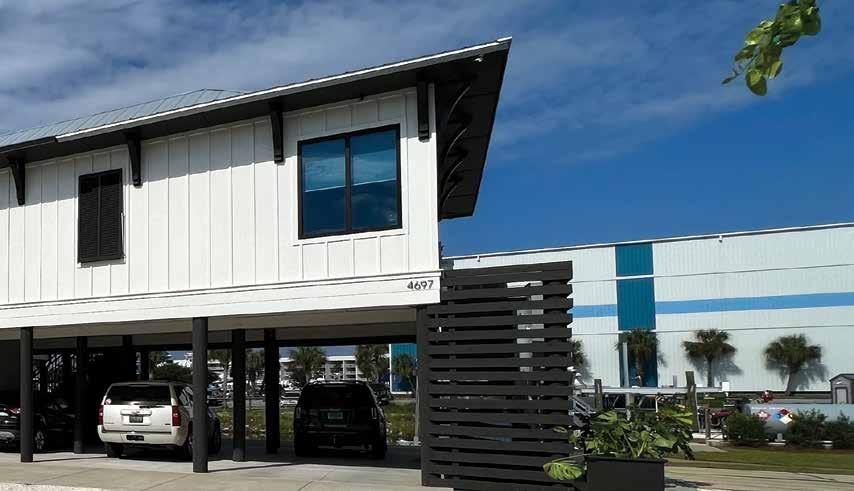
Funding for the station was secured through the Alabama Gulf Coast Recovery Council in cooperation with the state’s Department of Conservation and Natural Resources.



The effects of natural and man-made disasters on the primary industries in the region have resulted in economic adjustments and dislocations primarily through reductions in tourism and the simultaneous effects on tourism-related industries, damage to public and private infrastructure, negative impacts to agriculture and fishing-related industries, and damage to the natural environment and natural resources.
Through the creation of this facility, Auburn University and its partners will engage in fundamental and applied research of critical importance to the coastal environment and communities of Alabama and the larger northern Gulf Coast region. The station will be dedicated to addressing all the goals and objectives set forth in the 2016 Gulf Coast Ecosystem Restoration Council Comprehensive Plan.
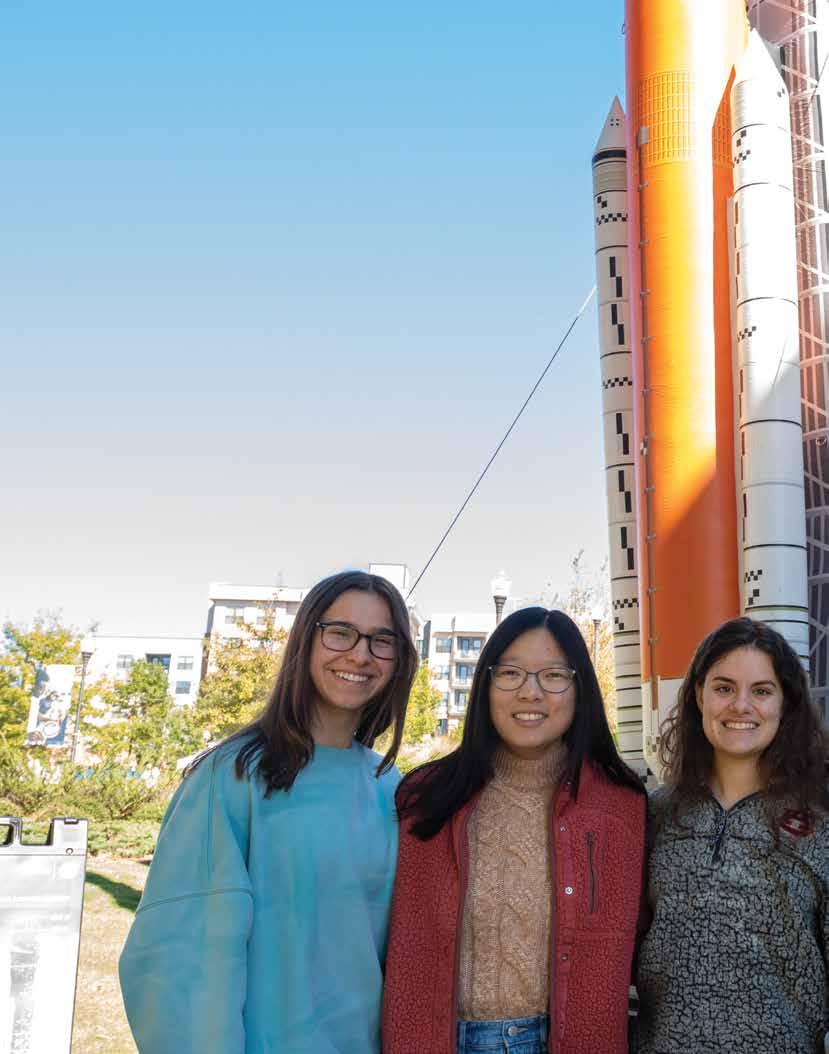

Among the projects IDEAS program students are currently working on include critical projects such as NASA’s Space Launch System core stage and exploration upper stage (right) and the U.S. Air Force’s new digitally designed, built and tested T-7A advanced trainer.
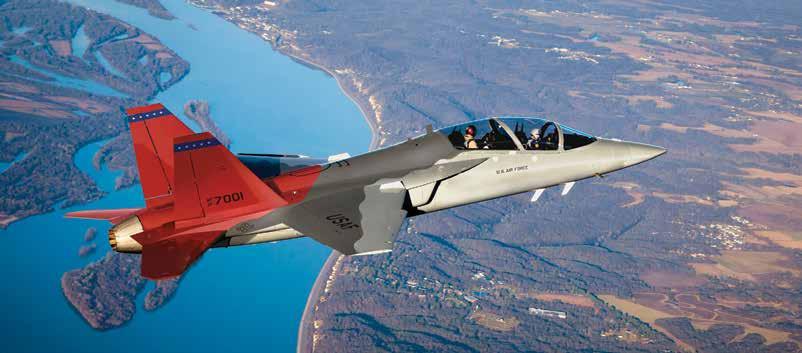
The Samuel Ginn College of Engineering and Boeing have enjoyed a longstanding partnership in support of Auburn University students. Beyond funding scholarships and supporting underrepresented students and student organizations, Boeing is now providing opportunities for dozens of Auburn Engineering undergraduates to obtain hands-on, real-world design experience on groundbreaking aerospace projects.
The Industry Design Experience for Auburn Students, or IDEAS, program currently employs nearly 50 students through the university who are working on critical projects such as NASA’s Space Launch System core stage and exploration upper stage; the U.S. Air Force’s new digitally designed, built and tested T-7A advanced trainer; upgrades to the F-18 fighter jet and the B-1 bomber.
Students are issued a badge, computer and email address just like onsite Boeing employees, and some even have the opportunity to earn security clearances and work at Boeing facilities during summer or holiday breaks. The university provides a dedicated secure workspace for the students in the program.
Sushil Bhavnani, the Henry M. Burt Professor of mechanical engineering who has been a member of the engineering faculty for the past 35 years, serves as the director of the IDEAS program, while Samantha Allbrook serves as the program administrator through the college’s Business Office. To date, more than 150 Auburn students have participated in the IDEAS program with Boeing.
“Boeing is extremely proud of the relationship we have with Auburn University and its College of Engineering,”
Ken McCormick, ’90 Boeing
Director of Executive Transport Structures and Innovation

Other projects the students have worked on include the B-1 bomber.

“Boeing is one of the premier aerospace companies in the world, and we are thrilled to have this partnership through the IDEAS program,” said Steve Taylor, interim dean of the Samuel Ginn College of Engineering. “Our undergraduate students are working on projects that are vital to our country’s success, and this real-world experience will serve them well as they work toward internships, co-ops and full-time employment. When we say we provide the best-student centered engineering experience in America, this is a perfect example of that.”
Ken McCormick, ’90 mechanical engineering and Boeing’s director of executive transport structures and innovation, said Auburn was selected for this program because of its outstanding reputation across the aerospace industry and it has benefitted everyone involved.
“Boeing is extremely proud of the relationship we have with Auburn University and its College of Engineering,” McCormick said. “Through this strategic partnership, we are training and inspiring the next generation of engineers by providing opportunities for students to gain hands-on engineering experience with real-world innovative products.”
Former IDEAS student employee Sean Farkas, ’22 mechanical engineering and current systems engineer/analyst at Torch
Technologies, said his experience with the program paved the way for his current position and gave him an advantage over other applicants.
“As an entry level engineer who had multiple job opportunities right out of college, I want to stress the importance of gaining work experience while in school, whether that be through a co-op, internship, research or the IDEAS program with Boeing,” Farkas said. “For me, the IDEAS program provided fantastic opportunities to learn about how a company like Boeing operates, how the Space Launch System is designed and how to think like an entry level engineer when completing work tasks. Learning these skills as a college student furthered my interest in the defense and space industry and gave me the experiences that employers ask about when you’re searching to land a desired career.”
Listen to our podcasts with Sushil Bhavnani and Steve Taylor at eng.auburn.edu/ginning


Artificial intelligence (AI) is already impacting our lives in significant ways. You have a cell phone, right? Data received by all those crazy apps on your home screen provide information that otherwise couldn’t be tracked at once.
When we walk, our steps are magically recorded. It’s a good thing, because counting 10,000 steps by memory each day wouldn’t be fun.
When we listen to music, our app of choice keeps track of our favorite tunes — and those we dislike — to create an evolving rotation most pleasing to our ears.
Overnight, AI-powered apps track our sleep habits. Artificially powered applications even provide soothing sounds and the dreaded alarm at 6 a.m. AI has become a key player in chatbots, self-driving cars, cybersecurity and facial recognition. Just look at your cell phone and it unlocks.
When we shop, either online or in the store, AI tracks our spending habits via our credit/debit cards with product bar codes. Why else would we mysteriously receive pop-up advertisements for those Vlasic pickles we just bought or coupons in the mail from Kroger for Totino’s pepperoni pizza rolls? Just listen to the beeping noises at the grocery checkout aisle. There’s more going on than accumulating purchases.
“The world of AI keeps expanding,” said Gerry Dozier, the Charles D. McCrary Eminent Chair Professor in computer science and software engineering. “AI is making life easier for us all. Think about it… we’re all sheer data, just in human form. We generate data by the buttons we press, the cards we swipe and the websites we visit, what we write or say or how we write and say it. As long as there is a sensor, or program created, to capture that data, then this can be used to better understand our tendencies or preferences.
“But… some people are beginning to take the power of AI for granted. How so? As we generate tons of sophisticated solutions, or applications, these great advances aren’t new anymore. They’ve become a part of us,” he said.
AI is obviously improving our lives. But can we improve AI, harness the information it delivers and take it even further?
Auburn University believes so.
As the state leader in AI innovation, research and education, Auburn University bolstered this position through an investment of $2 million by the Office of the Provost with support from the Samuel Ginn College of Engineering to create AI@AU, the Auburn University Artificial Intelligence Initiative.
More than 115 professors from a variety of academic disciplines across Auburn University’s campus — including engineering, business, agriculture, and sciences and mathematics — have teamed to create perhaps the state’s largest AI think tank.
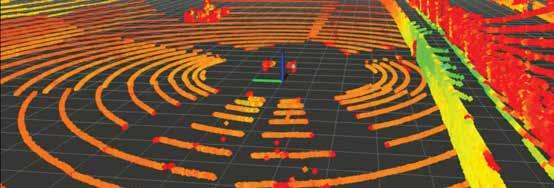
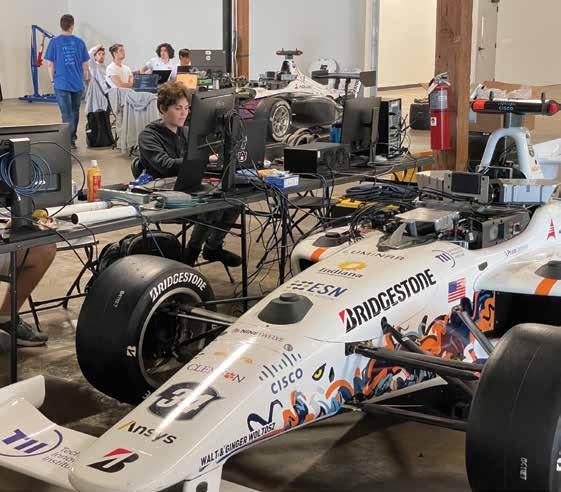
The project was created to: assemble a university-wide multi-disciplinary faculty team to expand AI research and education; build a computational infrastructure for AI research and education at Auburn University; develop Auburn’s faculty infrastructure for AI research and education; explore university-wide educational innovations in AI; and become the university’s focal point for participation in statewide, regional and national initiatives such as the SEC AI Consortium.
“This initiative puts Auburn in a leadership position in the field of artificial intelligence, and that leadership can benefit the university and the state in multiple ways,” said Hari Narayanan, Department of Computer Science and Software Engineering chair and AI@AU administrative lead. “It positions Auburn to compete successfully for all sorts of research opportunities, funding and collaborations with industry. This will also allow us to hire more faculty with experience and expertise in AI.”
Some of the initiative’s objectives include:
• A university-wide faculty group for coordinating and supporting AI-related educational and research activities.
• The installation of an AI computational resource to support AI-related education and research.
• The creation of a university-wide distinguished lecture series, featuring prominent researchers in AI, those who
investigate the ethics of AI and its societal impacts, and those who apply AI to disciplines including the arts, agriculture, architecture, humanities and engineering.
• The creation of certificate programs on AI in the disciplines for Auburn students — preparing them for the workplace.
• The creation of a faculty-led AI think tank that eventually becomes a focal point for connecting with external opportunities and generating extramural funding for research and education.

“The idea is to use all of this as a springboard to establish a strong footprint in AI-related research and education across all fields of academic disciplines at the university,” Narayanan said. “We want to convey that AI is a top priority at Auburn University.”
Within four months of the initiative’s creation, more than 115 professors from a variety of academic disciplines across campus,
Thought leaders at Auburn University are identifying cutting-edge research ideas, from robotics to automated trucking to facial recognition, that utilize AI’s strengths and help create better business practices and novel approaches to solving everyday problems.
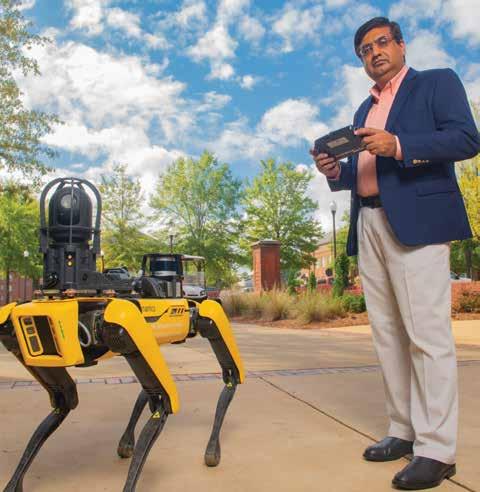
including engineering, business, agriculture, and sciences and mathematics have teamed to create perhaps the state’s largest AI think tank.
“AI is moving so quickly and you’re seeing a ton of changes,” said Dozier, the initiative’s technical lead. “We needed to find a way to bring campus researchers and faculty together, where we can collaborate and collectively get ahead of the curve on what’s going on in artificial intelligence. This gives us an excellent opportunity to work together to create even better solutions. A lot of the things we’re doing at Auburn are cutting-edge.”
For instance, Anh Nguyen, assistant professor in computer science and software engineering, is using AI technology to transform facial recognition toward improving healthcare, correctly identifying criminals, and even into improving transportation services.
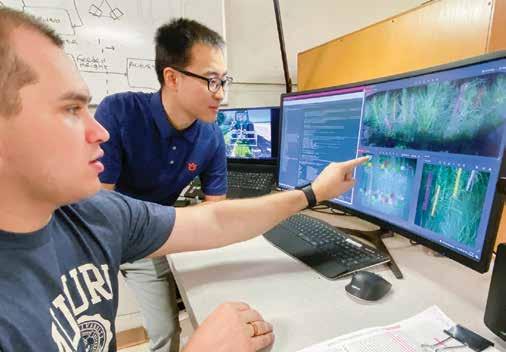
Yin Sun, assistant professor in electrical and computer engineering, is using AI and machine learning techniques to help food pantries across the state of Alabama improve inventory planning to better meet the needs of the hungry.
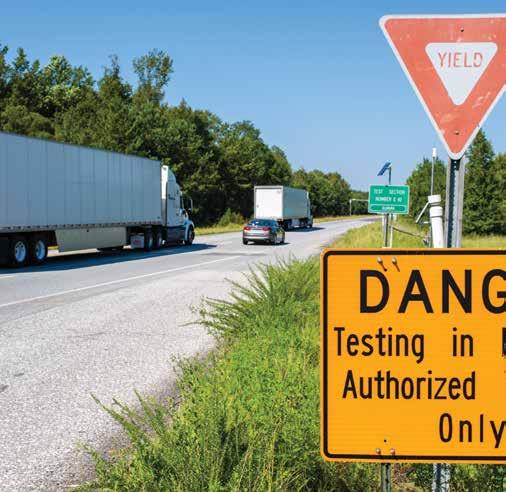
ShubhraKanti “Santu” Karmaker, assistant professor in computer science and software engineering, is taking a deep dive into the intersection of natural language processing and information retrieval.
His long-term research goal is to answer the question: How can we leverage computers to help humans in assimilating and digesting vast amounts of unstructured information at scale and speed, and accordingly, build better decision support systems through effective human-AI collaboration?
Dozier said the future of AI research is based on the imagination.
“Really, it’s anytime a researcher can say, ‘I want to make something better,’” he said. “Where people have a need, or there’s a problem, this is where artificial intelligence research can be used. We humans are good at some things, and AI is good at some other things. The question is… how can we get that human-AI collaboration together? I’m confident that our researchers at Auburn University will figure this out.”
AI surrounds us, thus the demand for an educated workforce continues to develop within Alabama and nationally.

“In terms of AI education and training programs, it is extremely important that individuals know and understand the opportunities afforded by AI, its limitations and how they can collaborate with and use AI systems to become more productive,” Dozier added. “It is also extremely important to be aware of the ethical issues related to AI and how AI can and will impact our society at present and in the future.”
The initiative will set Auburn University apart as a center of artificial intelligence research, education and innovation in the state, Narayanan said.
“No university in Alabama has an initiative like this,” Narayanan said. “By strengthening AI education across the university, it will attract industries that desire a workforce built on a solid AI education to move to Alabama. Why? Because they can depend upon a university like Auburn to produce graduates who are well-prepared.
“To sum it up, Auburn University aspires to become and remain the leader for artificial intelligence expertise in the state for years to come,” he added.
Listen to our podcast with Anh Nguyen at eng.auburn.edu/ginning
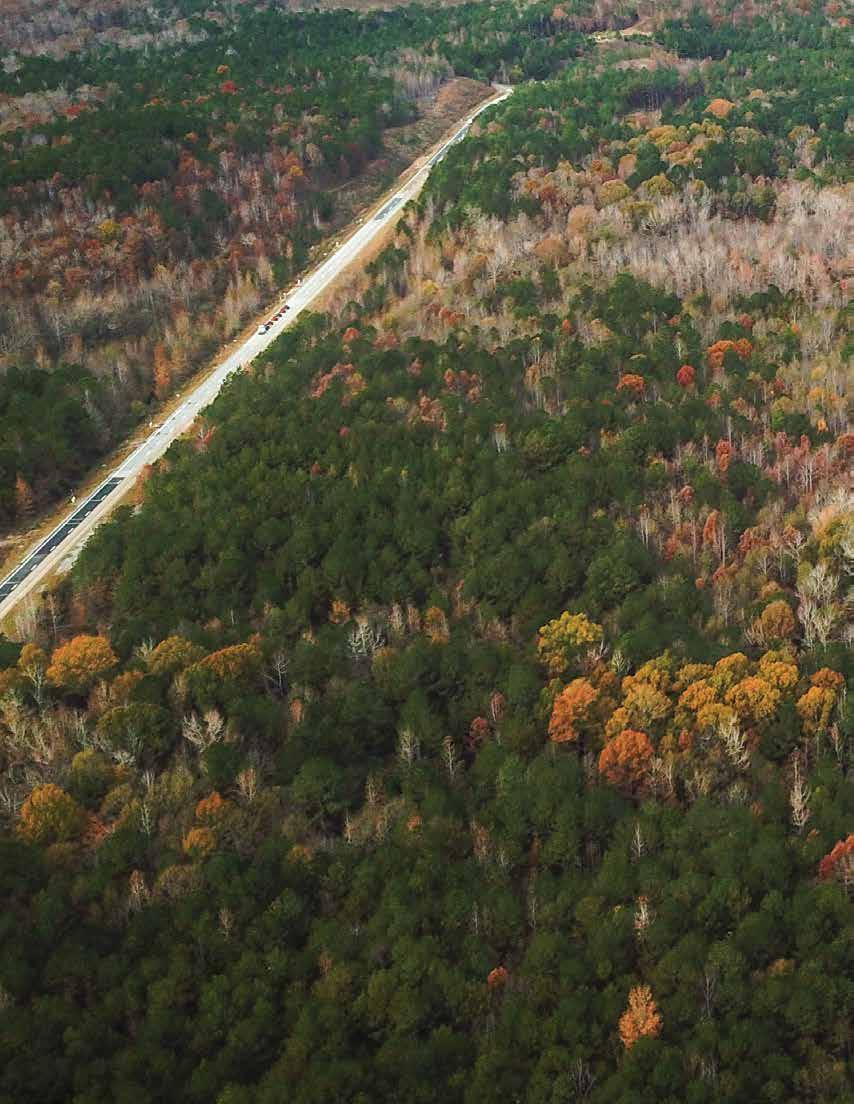
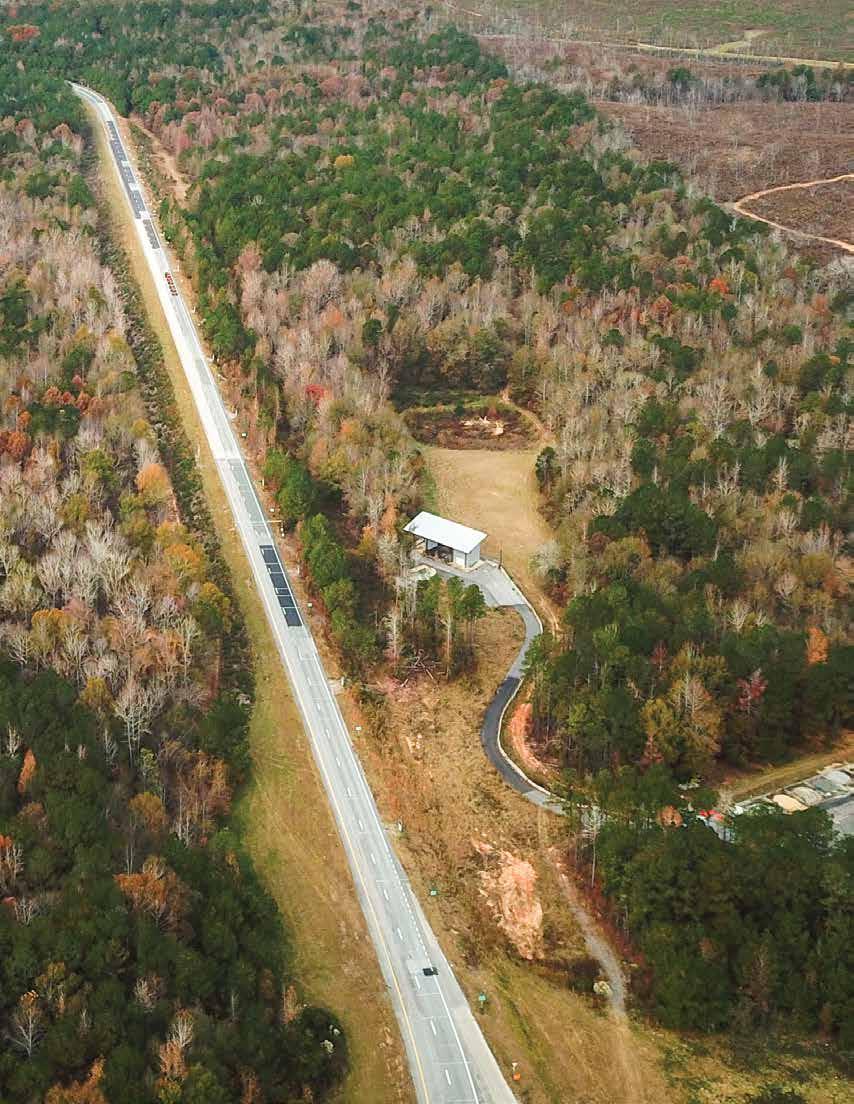
The National Center for Asphalt Technology (NCAT)’s Test Track recently crossed 10 million miles driven. Opened in 2000 as a testing facility for asphalt research, the track has provided pavement engineers across the USA with an outdoor laboratory where they can experiment with pavement designs while avoiding risks associated with damaged pavements on real-world roadways.
“The Test Track has always been an indispensable research tool to help highway agencies and the asphalt industry answer questions and prove the viability of technologies,” said NCAT Director Randy West.
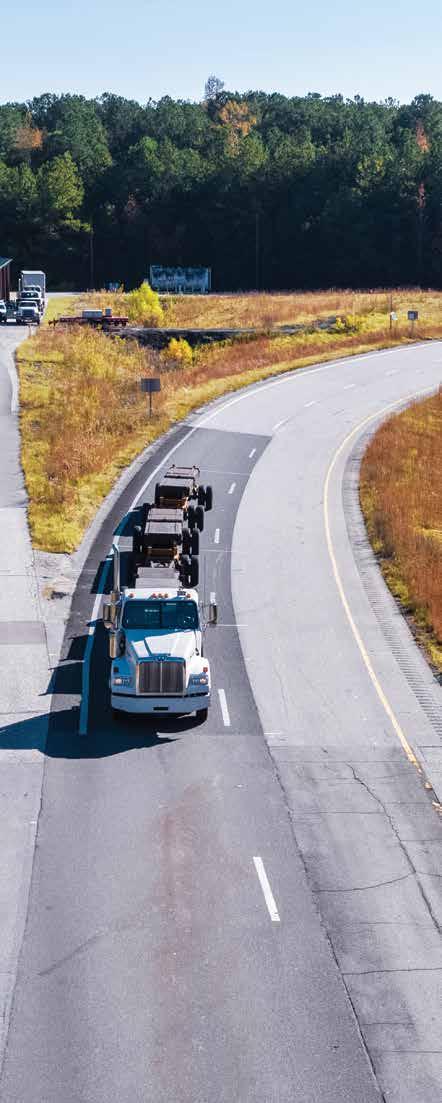
The Test Track offers researchers a unique chance to design, implement and show their findings on asphalt technology in one location, and has saved state departments millions of dollars each year with its results.
NCAT’s Test Track is a 1.7-mile oval where research is conducted on experimental asphalt pavements. Located on a 309-acre site about 15 miles east of Auburn’s main campus, the track is comprised of 46 200-foot test sections funded as a cooperative project among highway agencies and asphalt industry sponsors. The track was designed and built to simultaneously evaluate the performance of a range of roadway cross-sections and materials, and use those findings to improve sustainability, safety and cost effectiveness of roadways.
“We serve as a bridge between the real world and the laboratory,” said Test Track Manager Jason Nelson. “We utilize real drivers in real trucks.”
The track’s test sections are classified in three different ways: structural experiments, surface mix experiments and pavement preservation studies. Multi-depth temperature probes are installed in each test section, and are paired with an on-site automated weather station, to aid in characterizing how the test section responds to loading and environmental changes. These variables allow researchers to quickly analyze and implement their findings into improved pavement designs.
“In a three-year research cycle, you can put a design life’s worth of traffic in a couple years,” Nelson said. “You don’t have to wait
10 years, 20 years. You know what that pavement’s going to do out in the real world.”
Research cycles at the track last for three years and are broken down into three phases. The first phase focuses on construction, with research sponsors making on-site visits to ensure the sections satisfy their research needs. Various parameters are measured during the construction process to capture properties of the sections.
“Great research can be done in the lab and with computer simulations, but there is no substitute for proving that a new material or design method works on the Test Track,” West said. “Our sponsors know that if we can prove something works on the Test Track, it is ready for implementation.”
In the second phase, each section of the track endures rigorous heavy truck traffic in a period of two years. Each section of the track is subjected to 10 million equivalent single axle loads, which simulates long-term wear and allows researchers to deliver highly technical results to state highway departments quickly.
The final phase of the cycle involves forensic analyses of damaged sections on the Test Track to determine the contributing factors to pavement distresses. At the end of each cycle, test sections may remain in place for additional evaluation, or are replaced to support new research.
“We spend billions of dollars on roadway infrastructure in this country every year, so we have to do controlled experiments to see what works and doesn’t work,” said NCAT Associate Director and Research Professor Buzz Powell.
Besides asphalt testing, the NCAT Test Track is used for a variety of transportation-related projects including the development of new heavy vehicle suspension systems, truck platooning, evaluation of alternative fuels, improved tires, a vehicle rollover prediction system, advanced propulsion systems and improved vehicle electronics and safety.
The site of the track also has special geological characteristics that lend themselves to other engineering research studies.
“This site is unique because there is really shallow rock on the west end, but then really deep clay on the east end,” Powell said. “It’s a national geotechnical experimentation site.”
Before the track’s completion, NCAT’s work was already widely respected by the asphalt industry across the nation. Research had been conducted with a dozen state departments of transportation. In 1998, the Alabama Department of Transportation and NCAT began planning to construct and

operate the Test Track on 310 acres of land. The groundbreaking ceremony was held in September of that year.
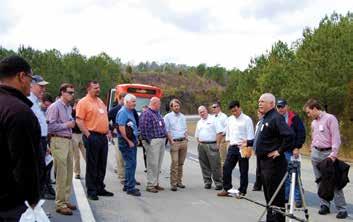
The Test Track was finished in August 2000, with the first laps around the track completed that September. Initially, the Federal Highway Administration and nine states (Alabama, Florida, Georgia, Indiana, Mississippi, North Carolina, Oklahoma, South Carolina and Tennessee) sponsored the work at the track. The track has 46 sections divided into 26 sections that are each 200 feet long on each straightaway and 20 additional test sections in the curves.
Finding truck drivers was another important step to operating the Test Track. During the track’s first cycle, driving was outsourced to a trucking company, but researchers learned that it was more cost-effective and efficient to hire their own drivers to do the job, a system that is still in place today.
Research at the Test Track unites real-world pavement construction with live heavy trafficking in a controlled environment. This allows highway agencies and commercial interest groups to quickly analyze and implement findings from the track.
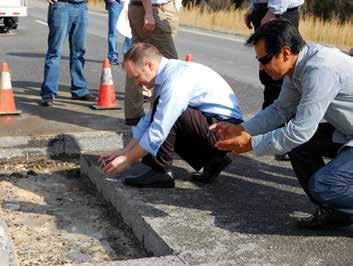
“Our mission is safe and sustainable asphalt pavements at the lowest possible life-cycle cost,” Powell said. “We’re the only place that has a track like this. We’re the only place that has this outdoor laboratory where we can connect lab predictions to real-world performance.”
The type of research conducted at the Test Track is known as full-scale accelerated performance testing. The traffic that would normally travel on a roadway over many years is compressed and driven in only two years. Accelerated testing allows researchers to fully consider the effect of increasing traffic demands on future asphalt performance.
This distinctive type of testing has not only allowed for quick and accurate results, but has also allowed Test Track researchers to save money for their agencies.
In a poll conducted by NCAT, sponsors of the track indicated that on average, each dollar spent on research at the facility saved $46 in real world implementation. In an industry that often relies on a safe bet, the track is an invaluable asset.
“DOT engineers tend to be conservative because there’s no incentive for them to try something new that might not work,” Powell said. “We stand in the gap for them, and they can do things here that are high risk, high reward. We’re making a difference.”
Now in its eighth research cycle, the Test Track provides researchers in the asphalt industry opportunities to innovate that
otherwise wouldn’t have existed. To Powell, learning through pavement failings on the track has brought invaluable insight to asphalt technology across the world.
“To me, it’s incredibly fun to be doing work that leaves the world better than how we found it,” Powell said. “In academia, there is a lot of emphasis on how many research dollars you’re bringing in. That’s never our focus. Our success is measured by the impact of the things that we learn.”
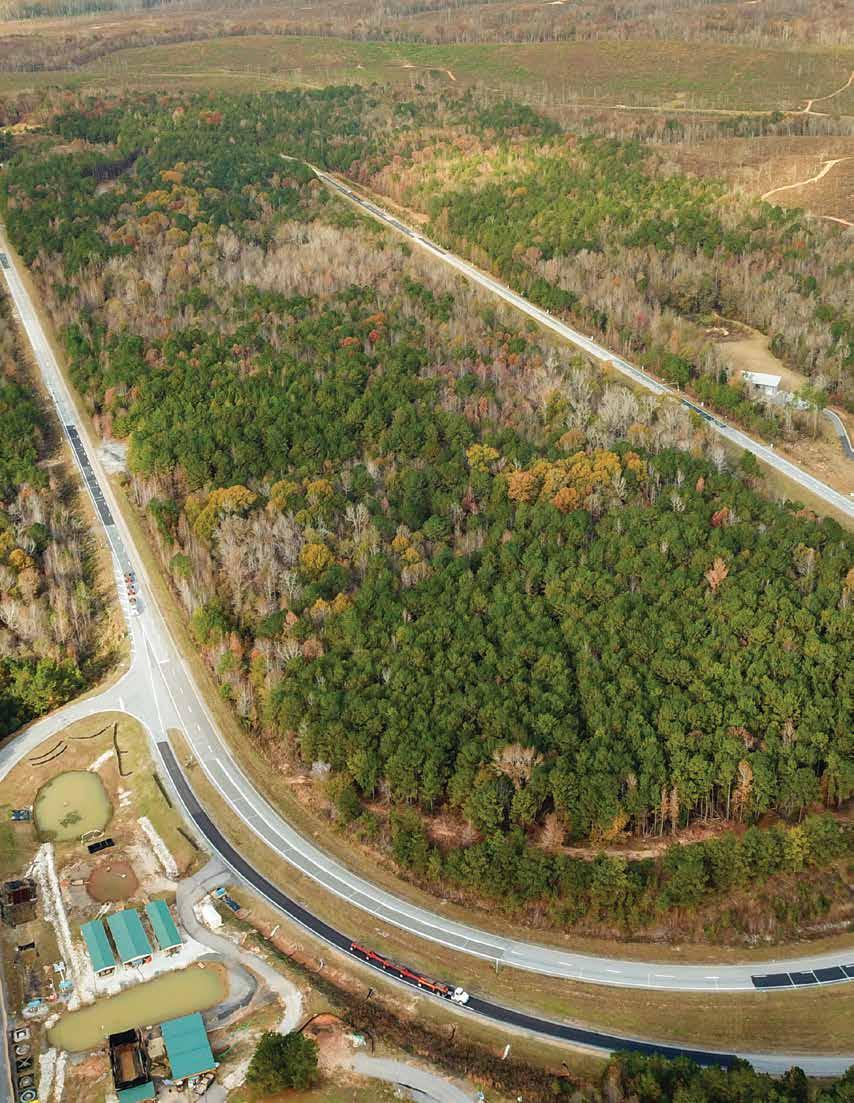
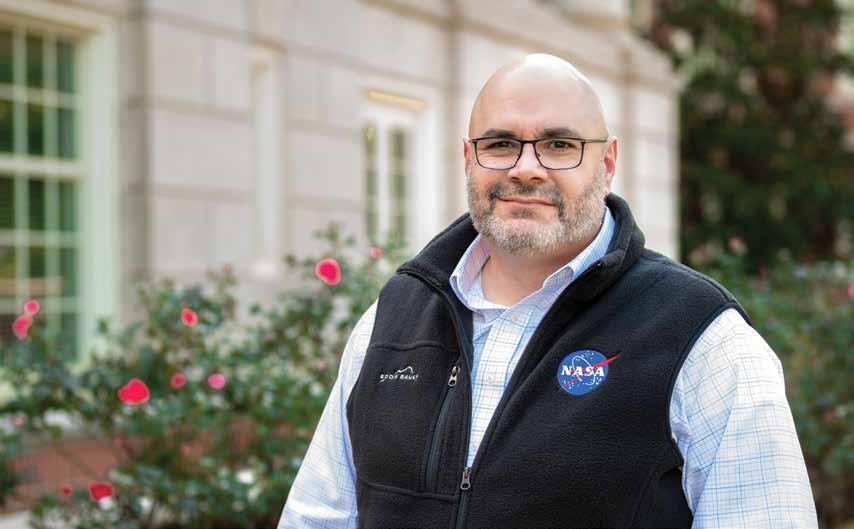
Explain your responsibilities as Marshall Space Flight Center’s deputy director.
My priority role is to assist our center director, Jody Singer, in the day-to-day leadership of all center activities. This includes ensuring we are delivering on our mission assignments, managing the budget, risk and schedule for successful programmatic execution. I also join in leading our strategic planning activities, engaging with internal and external stakeholders to ensure advocacy for future opportunities. Marshall has approximately 7,000 civil servant and contractor employees and I take pride in joining with our senior leaders to ensure we provide a workplace environment that is safe, mission focused and inclusive of every individual on our team.
What attracted to you a career in the development of spacecraft-related engineering?
From an early age, I was drawn to anything related to flying or space travel. I would record every space shuttle launch to study all the phases of the mission. When we experienced the Challenger disaster, I became motivated to join NASA so I could help ensure
we didn’t repeat that terrible day. I had hoped to become a fighter pilot, but my eyesight wasn’t strong enough to fulfill that goal, so I pursued the engineering path. Auburn University’s aerospace engineering program prepared me well for my career at NASA. I can say that I did not imagine how my path would lead me to the opportunity I have now, to serve as the deputy director of one of NASA’s largest field centers. I’ve had great mentors and many folks in the Auburn Family who have contributed to my growth and I’m excited to see what the future holds for our nation in space exploration.
What’s the most satisfying aspect of your job?
I get the opportunity to work with awesome teams on amazing missions that can benefit all humanity. I am most satisfied when I get to see our teams experience the results of their contributions through mission success. One of the most important things I can do in my job is to ensure our teams have the tools and resources they need to achieve that success. From my new role, I get to see all the mission activities we are performing for the agency and it’s exciting to see how we are enabling space exploration for the future.
What’s the most challenging aspect of your job?
The nation’s space enterprise is rapidly changing, and we are seeing truly exciting advances in both government and industry. NASA’s role is also changing as we shift our mission focus to
Listen to our podcast with Joseph Pelfrey at eng.auburn.edu/ginning
deep-space exploration while transitioning more of our low-earth activities to industry services. Marshall has a history of deep technical expertise in complex space system design, development, test and operations and we are adapting to apply those capabilities to support not only NASA missions but also industry endeavors. Our challenge rests in expanding our operating models to reflect these changes, accelerating to the pace of industry as opposed to the traditional government pace.
What is the Marshall Space Flight Center’s primary role in the Artemis mission?
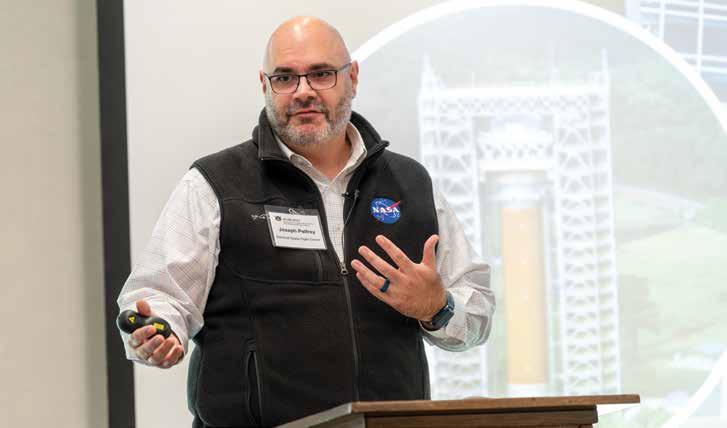
Marshall Space Flight Center serves as one of the primary NASA centers leading in human spaceflight. Our expertise is being applied in many ways to support the Artemis campaign. The Space Launch System program, led by Marshall, will serve as our deep space, heavy lift launch capability. Marshall teams are also leading the development of the next human lunar lander with the Human Landing System program. Our teams are also working to develop the early designs and technologies needed for habitation systems to allow long-term presence on the lunar surface or for transit to Mars.
These elements all contribute to the goal of exploration and discovery and our science teams are defining the objectives that will allow us to expand our knowledge of our universe. Each
of these initiatives include extensive industry partnerships and collaboration, and Marshall will continue to be a leader in our exploration and science goals of the future.
What’s the most valuable lesson you learned at Auburn?
I learned the value of teamwork at Auburn. That is so important when taking on comprehensive projects of this nature. I remember our senior project — testing propellant tank designs on NASA’s KC 135 zero-gravity aircraft. Our team worked together and participated in the process for safety and design reviews, which is very similar to the process we evaluate space craft flight readiness today. Industry experts came in and evaluated our experiment to ensure we were not doing anything unsafe. I believe I’ve repeated that process more than 50 times since then.
You notice them by the way they communicate. They’re deep, technically, and they understand the big picture, too. When you think about a large rocket, the Space Launch System, for example, it’s actually a system of systems within itself. Auburn engineers can lift their heads out of their technical area and recognize how some parts of a system will interact with other parts of a system. That’s critically important when developing complex space missions. Auburn engineers contributed in many ways to get us ready to launch the Artemis I mission.
In only his second year on campus, industrial and systems engineering sophomore Tylan Rudolph has already made a big impact.

To name a few of his accomplishments, Rudolph is a Student Government Association senator, student recruiter, vice president of the National Society of Black Engineers, is involved with the Center for Inclusive Engineering Excellence and founded the Student Model Legislature. He is also involved in political and business consulting and is in the process of starting a venture capitalist fund.
“I am a service-based leader,” Rudolph said. “I like to throw myself in the fire, watch everything burn away and what’s left
standing is what’s true. What’s left standing, that’s what my calling is.”
Rudolph describes himself as a businessman and serial entrepreneur. When deciding on a major, he looked for a program that was business-related.
“I love creating new processes,” Rudolph said of his decision to study industrial and systems engineering. “I love looking to new ventures and finding new ways to do things. The common denominator for excellence and the common denominator for good people who came out of good programs was Auburn. So, I knew this was where I had to be.”
Listen to our podcast with Tylan Rudolph at eng.auburn.edu/ginning
SAMUEL GINN COLLEGE OF ENGINEERINGI believe in honesty and truthfulness, without which I cannot win the respect and confidence of my fellow men.BY CASSIE MONTGOMERY MOLLY HUGHES Senior Lecturer Civil and Environmental Engineering
When it comes to connecting with her students, Molly Hughes has a leg up on most other faculty at Auburn. The senior lecturer in civil and environmental engineering earned both her bachelor’s and master’s degrees from Auburn, so she has literally been through the same classes — and even sometimes the same classrooms — as her students.
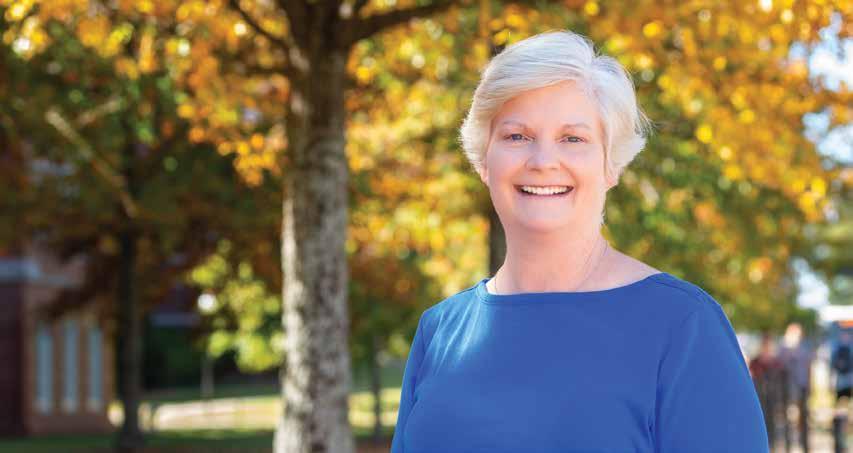
“I had classes in the classrooms where I’m teaching now,” she said. “That’s very relatable to the students — I can say to them ‘when I took statics in this room’ — and I do think they probably relate to that on another level.”
Prior to joining the Auburn Engineering faculty in 2003, Hughes worked for the Air Force Research Labs at Eglin and Tyndall Air
Force Bases. She caught the teaching bug first as an algebra teacher at a community college and then as a graduate class instructor at an outpost of the University of Florida.
When the Auburn position opened up, she knew it was the right fit.
“I am very blessed to have such an incredible job, but I’m also lucky to have students from their freshman year and to get to see them progress through. It’s so wonderful to get to see someone grow up and gain all this knowledge and apply it, and then they’re off to their fancy jobs,” Hughes said.
Though she describes her teaching style as “old school,” she boils it down to simply caring about students’ success.
“I try to let students know that I care and that they have the ability, if they’re willing to work — and they do have to work, they can’t expect it to osmose into their brain — but if they’re willing to work, then things will go well.”
I believe in my Country, because it is a land of freedom and because it is my own home, and that I can best serve that country by “doing justly, loving mercy, and walking humbly with my God.”
Listen
BY AUSTIN SHANNON PRICE DirectorWhen COVID hit in March 2020, uncertainty was everywhere. Would classes be cancelled? Would classes move to remote instruction? If so, how? Shannon Price, that’s how.
With seemingly the flip of a switch, Auburn Engineering courses moved to remote instruction when students returned from spring break, and most people never missed a beat.
That’s because of Price, director of the college’s Office of Engineering Network Services who has served the university for the past 20 years, and his team of seven.
“My mother-in-law said to me, early on in the pandemic, ‘I guess you’re bored in the office with nobody in the building,’ to which I
said, ‘We’re just supporting people who are taking classes online, teaching classes online, conducting their research online or working from home. That’s all,’” Price said with a laugh.
While it was challenging and a learning experience for all, it was almost 100% successful from the time everyone was sent home in March until in-person learning returned during the late summer and in the fall.
But Price is used to answering the challenge. As an Auburn Engineering graduate with a bachelor’s and master’s degree in computer science in 1992 and 1994, respectively, Price knows what it means to undertake work, hard work.
He was the college’s first Birdsong Study Abroad Scholarship recipient, spending a year in Germany, and later returned to the classroom to earn a bachelor’s degree in the foreign language discipline.
Gut gemacht, Shannon, gut gemacht!
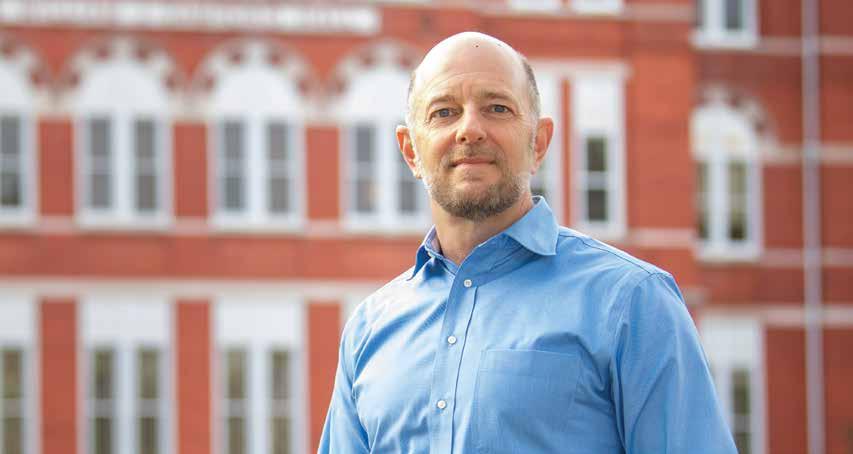
PHILLIPS
I believe in education, which gives me the knowledge to work wisely and trains my mind and my hands to work skillfully.to our podcast with Shannon Price at eng.auburn.edu/ginning BY BETHANY DEUEL CASEY ROBINSON TROUTMAN Distribution Operations Manager Georgia Power
Growing up in a small Alabama town, Casey Robinson Troutman had to pick her football allegiance from a young age. After choosing Auburn University in the third grade, she visited Auburn for the Minority Introduction to Engineering (MITE) program while in high school, and her decision was confirmed.
“MITE exposed me to the various engineering disciplines, and I learned the value and reward that pursuing a technical degree could offer. I liked civil engineering because of the diversity of the degree,” she said. “You can do so many different things with civil engineering.”
Robinson Troutman, ’00 and ’03 civil engineering, got involved in several campus organizations, including the National Society of
Black Engineers (NSBE), during her time as a student, where she found valuable mentorship.
“NSBE’s mission, ‘to increase the number of culturally responsible Black engineers who excel academically, succeed professionally and positively impact the community’ was instilled in me. Having access to upperclassmen who could share their insights was helpful,” she said.
As a manager at Georgia Power, Robinson Troutman now uses the skill set she developed at Auburn University to implement strategic initiatives, problem-solve, build relationships and develop others.
“I think having an Auburn Engineering degree matters,” she said. “Many people invested in me and that’s why I believe in Auburn and love it. That is why my husband, Terry, and I give back to Auburn financially and why I serve on advisory boards in the College of Engineering; it’s about investing in others and leaving a legacy.”

I believe that this is a practical world and that I can count only on what I earn. Therefore, I believe in work, hard work.
Vrishank
Assistant Professor 334.844.6811 vzs0037@auburn.edu aub.ie/VRaghav
Vrishank Raghav, an assistant professor and Ginn Faculty Achievement Fellow who directs the university’s Applied Fluids Research Group in the Department of Aerospace Engineering, has been named as a recipient of the 2022 Faculty Early Career Development (CAREER) Award from the National Science Foundation, one of the organization’s highest honors in support of junior faculty.
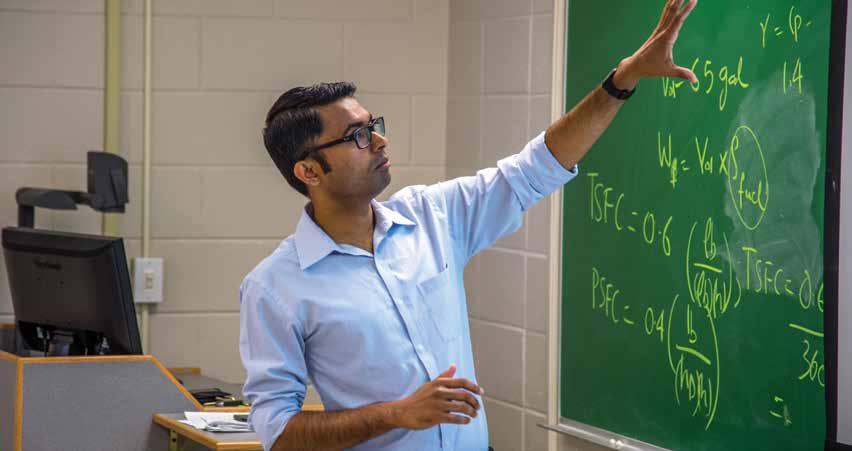
He is the first Department of Aerospace Engineering faculty member to receive the award while at Auburn.
Raghav’s CAREER Award, including $500,000 over five years, will provide support for his integrated research and educational activities on “Fluid-Structure Interactions in Pulsatile Flow.”
 BY JOE MCADORY
BY JOE MCADORY
Fluid-structure interaction is ubiquitous in nature and engineering applications, for example, in natural flight, physiological flows, biomechanics, aeronautics and space exploration, among others.
In this project, Raghav will apply concepts and techniques from aerospace engineering to understand how pulsating flow of blood impacts the durability of heart valve replacements.
What’s the main problem? Flutter.
“Aerodynamic and aeroelastic flutter is a well-known problem in aerospace engineering,” said Raghav. “In aeronautics, flutter is undesirable vibrations of an elastic structure caused by coupling between the flow and structural motion, and unconstrained flutter can lead to fatigue failure of critical flight components. Similarly, flutter or vibrations of artificial heart valve leaflets contributes to early valve deterioration through fatigue failure.”
To address this, Raghav will establish a new paradigm in higherfidelity experimental fluid-structure interaction measurements using light-field imaging to simultaneously quantify time-resolved 3D flow fields and the associated structural motion.
This method will gather measurements to derive scalable parameters to classify regimes, or levels, of flutter in pulsatile blood flow, then identify the associated flow physics mechanisms.
SAMUEL GINN COLLEGE OF ENGINEERINGSushil Adhikari, professor of biosystems engineering and director of the Center for Bioenergy and Bioproducts, was awarded more than $700,000 by the Alabama Department of Economic and Community Affairs for the project “Advanced Liquid Transportation Fuels from Co-Liquefaction of Forest Biomass and Waste Plastics.”

The money was awarded out of the $4.8 million Alabama Research and Development Enhancement Fund, and five universities across the state of Alabama were awarded a portion. The Samuel Ginn College of Engineering received $1.6 million for various projects.
Adhikari’s project focuses on converting forest biomass and plastic waste into transportation fuels. This will utilize both the natural abundance of forest resources the South has to offer and the
environmental nuisance of plastic waste, in order to convert it into an environmentally-friendly liquid fuel alternative, according to Adhikari.
Most of the award will be used to recruit graduate students and postdocs who will work on the project, and the rest will be used to purchase critical research equipment to build Auburn’s research infrastructure for biomass and plastic pyrolysis.
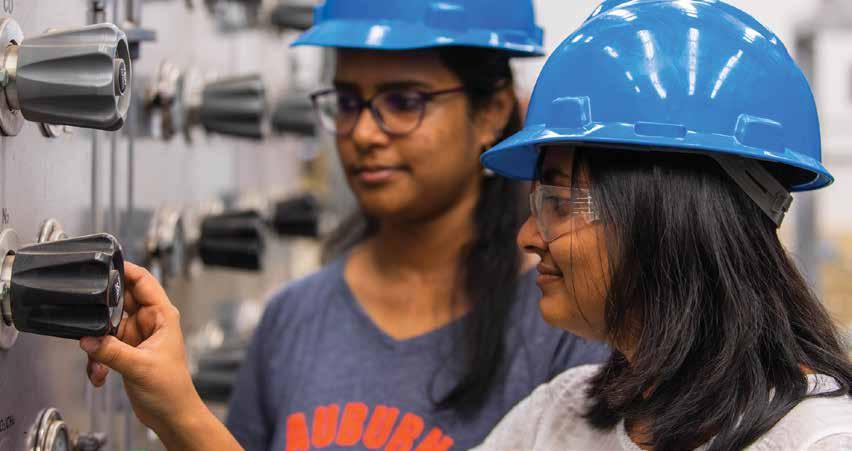
The project team will leverage existing infrastructure and expertise at the Center for Bioenergy and Bioproducts at Auburn.
“We have been working on converting biomass into energy for a long time, and receiving funding from ADECA to advance the process shows the importance of this research for our state,” Adhikari said.
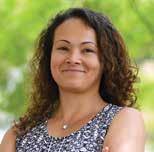
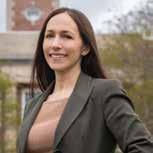
Elizabeth Lipke Mary and John H. Sanders Professor 334.844.2003 eal0003@auburn.edu aub.ie/ELipke Selen Cremaschi Redd Eminent Scholar Chair Professor 334.844.4970 szc0113@auburn.edu aub.ie/SCremaschi
For Auburn professors Elizabeth Lipke, the Mary and John H. Sanders Professor of chemical engineering, and Selen Cremaschi, the B. Redd and Susan W. Redd Eminent Scholar Chair Professor of chemical engineering, cardiomyocyte research is at the heart of their work.
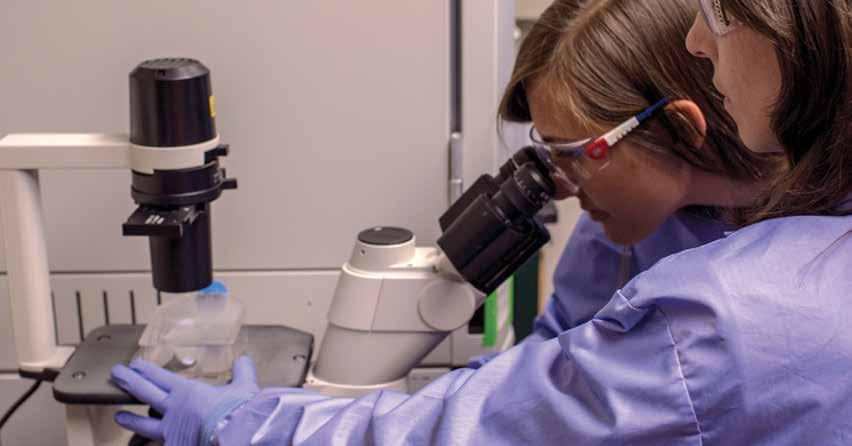
The duo has brought together a multi-disciplinary, multiinstitutional team to apply engineering and development biology knowledge and toolsets to advance heart cell production.
The National Science Foundation awarded $1.5 million, of which $924,660 is directed to Auburn Engineering, for the project
“RECODE: Directing and Controlling Cardiac Differentiation Through Cellular and Microenvironmental Manipulation and Application of Machine-Learning.”
The project is a collaboration between Auburn University, Stanford University and Alabama State University.
The goal of the project is to improve the ability to produce heart cells, specifically heart cells called cardiomyocytes, the contracting heart cells that do the work of pumping blood throughout the body.
“Unbeknownst to most people, there are over 20 unique types of cardiomyocytes in your heart, but the current state-of-the-art 2D methods for making these cells almost exclusively produce one of
these types,” Lipke said. “So we’re working to better understand the developmental biology processes involved and leverage that knowledge to produce different types in 3D tissue engineered systems.”
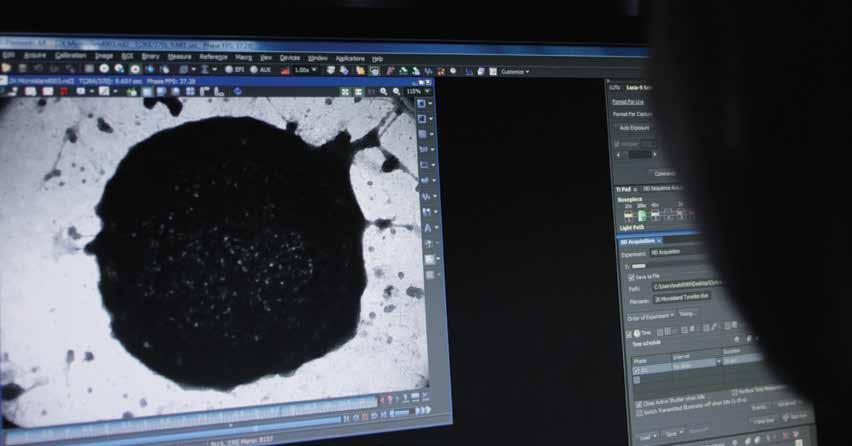
It is a costly, multi-dimensional process to experiment, test and produce the cardiomyocytes, according to Cremaschi. Closely integrating modeling and computational studies with the experimental work uniquely positions this research team to determine the best conditions for scalable heart cell production in a faster and more efficient way.
“As you can imagine, each experiment takes a long time to actually go from stem cells all the way to the cardiomyocytes, or the heart cells,” Cremaschi said. “They are costly, both in terms of time as well as resources. So, it’s not possible to test all possible combinations of producing these heart cells. What we’re trying to do is combine experimental studies with modeling studies to be able to rapidly identify what are some of the best conditions for getting different types of heart cells produced.”
Each professor on the project brings a unique skillset to the overall research. Komal Vig, professor of biological sciences at Alabama State University, specializes in the nanomaterials necessary for drug delivery. Sean Wu, associate professor of medicine at Stanford University, is a cardiologist who specializes in
cardiovascular developmental biology and cardiovascular disease modeling and regeneration.
“At Auburn we have expertise in data-driven model development and using computational models, which is Dr. Cremaschi’s expertise,” Lipke said. “My expertise is in tissue engineering and building 3D methodologies for producing cells in scalable systems.”
Unfortunately, heart issues are the most common cause of death in the United States and, although numbers had been going down since 2000, in the past few years they have been gradually increasing again with numbers during 2020 exceeding those in 2002, according to Lipke.
Because of the immediate need, it is essential to have researchers who are willing to learn both the experimental and modeling terminology to be able to communicate, be willing to share their expertise and data, and be able to build meaningful models that actually help move the process forward, according to Cremaschi.
There are also a lot of challenges in this field, but the reward is great, she said.
Listen to our podcast with Elizabeth Lipke at eng.auburn.edu/ginning
Kadir Sener
Assistant Professor 334.844.6268 kcs0047@auburn.edu aub.ie/KSener
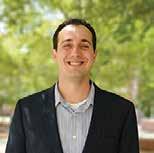 VIRGINIA SPEIRS
VIRGINIA SPEIRS
David Roueche
Assistant Professor 334.844.6256 dbr0010@auburn.edu aub.ie/DRoueche
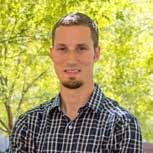
Jack Montgomery Associate Professor 334.844.6283 jzm0090@auburn.edu aub.ie/JMontgomery
Kadir Sener, assistant professor of civil and environmental engineering, had a busy year. With two projects totaling more than $1 million in federal grant funding, the structural engineering researcher is working to keep infrastructure safe from external hazards using sustainable and resilient solutions.
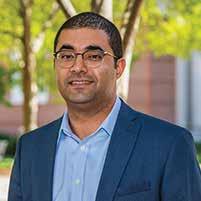

The first project, led by Sener and Jack Montgomery, associate professor of civil and environmental engineering, received $499,999 from the U.S. Nuclear Regulatory Commission to develop a soilstructure-interaction framework to enhance the regulatory oversight of new generation nuclear power plant designs known as Small Modular Reactors (SMRs).
“Most SMR designs that are currently under development place the critical compartments like the reactor containment or the entire Listen to our podcast
structure below ground level,” Sener said. “This structural layout is advantageous in protecting compartments with critical equipment from external hazards and also mitigating the environmental exposure of contaminants in an accident event. However, partially or fully burying these structures causes potential uncertainties related to the performance against earthquakes, where soilstructure-interaction and interface behavior are expected to have a significant impact on the structural response.”
The research team will conduct experimental and numerical studies to develop a modeling framework for improved safety of SMRs. “Nearly all studies on interface behavior between soil and structures have focused on small-scale tests or surface footings, which makes it difficult to know if the results are valid for large, buried structures,” Montgomery said. “The geotechnical chamber built into Auburn’s recently opened Advanced Structural Engineering Laboratory will give us the unique testing capability to test large-scale specimens that realistically simulate the interface behavior.”
Montgomery said the experimental data generated during the project will be seminal in guiding vendors and researchers to conduct further investigations on specific structure designs and soil conditions.
Additionally, Sener is the principal investigator on a multidisciplinary project that received nearly $500,000 in federal and industry funds, including $237,000 from the USDA Forest Service Wood Innovations Grant program.
The project includes four professors from three different disciplines in Auburn University’s Samuel Ginn College of Engineering who
will research the best way to design a sustainable, economically feasible building structure using timber and steel. The goal of the project is not only to provide an environmentally friendly construction option but also a structurally efficient and widely applicable building method.
Co-principal investigator David Roueche, assistant professor of civil and environmental engineering and specialist in crosslaminated timber, says that southern pine, one of the most abundant trees in Alabama, is one of the best species of wood to use in this project.
The current construction practice for mid-rise steel frame buildings uses 60-70% of the overall material in the floor alone.
Additionally, most of the material used is concrete — an inexpensive, yet environmentally detrimental material with a substantial carbon footprint.
For this reason, cross-laminated timber panels will replace the concrete in this new design.
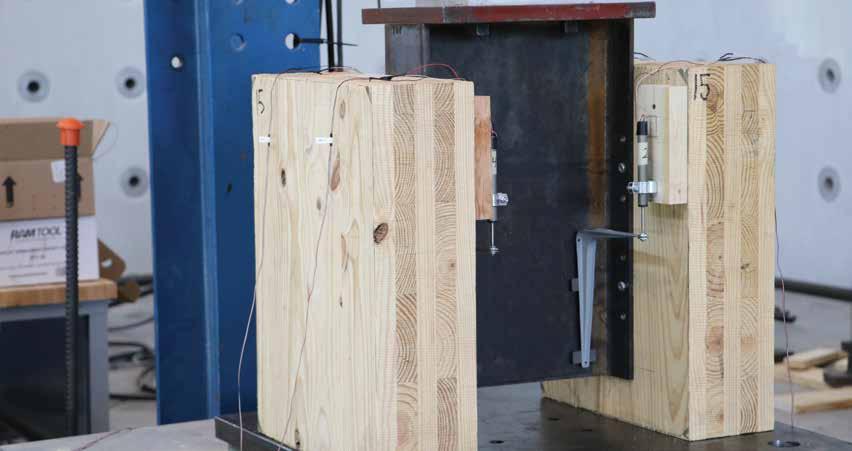
According to Sener, steel and timber are ideal structural partners. The combination of steel and timber have a degree of structural performance that the individual materials could never reach, he said.
“In order to open the market for mass timber, we wanted to use it with steel structures, since timber alone is not economically feasible for high-rise buildings,” Sener said. “We ended up designing a very sustainable construction system, too.”
The future of artificial intelligence includes autonomous vehicles, doctors and surgeons, and even helping authorities identify criminals. Though AI is transforming disciplines from transportation to policing to healthcare, AI-based systems often make mistakes when facing scenarios that they have never seen before.
Assistant professor Anh Nguyen earned a $460,736 Faculty Early Career Development (CAREER) Award by the National Science Foundation for his five-year project, “Harnessing external knowledge to improve computer vision robustness, explainability, and user accuracy.”

Funds allow his project to create the first K-6 artificial intelligence club in Alabama, explore creative ways to implement AI research
BY JOE MCADORYinto a new course at Auburn University, establish collaborative efforts with industry partners and educate external audiences by publishing reproducible code, public-oriented videos and explore new ways AI can reach better decisions, and ultimately provide better outcomes.

Poor AI decision-making can have disastrous consequences.
The solution? Build AI-based systems that harness external sources of knowledge to make more informed and accurate decisions. How? Utilize large text and image datasets, including Wikipedia and Google, for image classifiers to leverage and make better decisions. Humans often rationalize data before making decisions. Why not AI? The research goal is to shift the paradigm, where AIbased systems make deliberate decisions via critical thinking.
Nguyen will also explore means to design AI systems that users can better understand, learn thought processes and determine how and why conclusions are made. Then they can debug, assess them and improve them in human-in-the-loop applications.
He is joined on the project by a team of Auburn Engineering co-principal investigators from the departments of mechanical engineering and electrical and computer engineering.
Aside from eco-friendly creations, Mahjouri-Samani’s study, “TwoDimensional-Material-Based Field-Effect Transistor Biosensor for Detecting the COVID-19 Virus,” provides an alternative to detecting specific viruses.
The team developed the tiny electronic device based on 2D materials that are modified with antibodies so that it can immediately detect the virus spike protein.
Masoud Mahjouri-Samani, assistant professor in electrical and computer engineering, had a big 2021. One project was awarded $499,940 by the National Science Foundation (NSF), while another revealed instant test results for the COVID-19 virus.

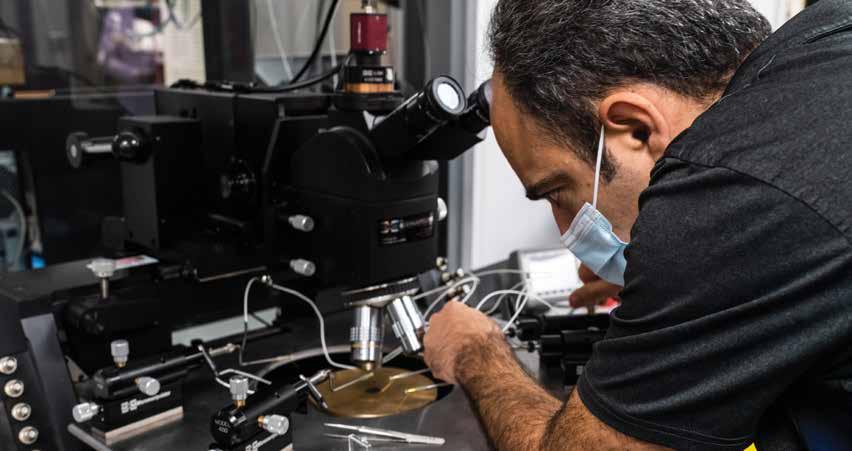
Mahjouri-Samani’s study, “Multi-Material Manufacturing of Eco-Friendly and Biodegradable Paper-Based Flexible Hybrid Electronics,” demonstrates a transformative dry additive nanomanufacturing approach that enables the printing of ecofriendly papertronics.
Currently, substrates in use are made of polymers, which never decompose. A team of researchers created the world’s first machine that can print on any substrate.
When the virus spike protein interacts with the antibody within the device, it impacts the electronic properties of the atomically thin monolayer 2D material.
Once the lab technician puts the sample drop on the transistor surface, the result is evident.
Collaborators include Michael Hamilton, professor and director of the Alabama Micro-Nano Science and Technology Center, Marcelo A. Kuroda, associate professor in physics and Sahar Hasim, assistant professor in biology at Mercer University.
Jia (Peter) Liu, assistant professor of industrial and systems engineering, is the principal investigator of a multi-disciplinary team of scientists that was awarded a $498,762 grant by the National Science Foundation for their project, “Federated Deep Learning for Future Ubiquitous Distributed Additive Manufacturing.” This Future Manufacturing Seed Grant project introduces developing a unified algorithmic and training framework, Federated Modular Deep Learning (FedMDL), for future distributed additive manufacturing (AM). FedMDL will ensure reliable production, consistent qualification and privacy-preserving information sharing at two levels: algorithmic and cyber-infrastructural.

According to Liu, the potential benefits of distributed AM in the supply chain are driving research efforts in the U.S. and across the globe.
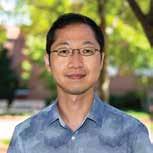
“The 3D printing COVID-19 rapid response initiative in the U.S. provided nearly one million pieces of safe personal protective equipment for local medical providers,” Liu said.
“But the unexpected debut of nationwide AM production revealed outstanding challenges FedMDL is targeting to fix,” he added.
By addressing the challenges of unreliable, consistent product quality and the inability to share information and insights without compromising privacy, FedMDL is charting a new course to achieve reliable and reconfigurable nationwide mass customization capabilities by distributed AM.
“Once the FedMDL framework is developed and validated, it will be open-sourced for the AM community and other manufacturing communities to expand their research to a distributed manufacturing paradigm,” Liu said.
Nima Shamsaei, Philpott-Westpoint Stevens Distinguished Professor of mechanical engineering is a co-PI.In five years, the National Center for Additive Manufacturing Excellence (NCAME) has turned Auburn University into a premiere destination for additive manufacturing research. Founded in 2017 through a public-private partnership with NASA and the National Institute of Standards and Technology, NCAME is housed within the Gavin Engineering Research Laboratory, which is specifically dedicated to additive manufacturing of metals, polymers and composites.
“NCAME conducts research on improving the performance of parts created using AM and shares research results with industry and government collaborators,” said NCAME Director Nima Shamsaei, the Philpott-WestPoint Stevens Distinguished Professor of mechanical engineering.
 BY JEREMY HENDERSON
BY JEREMY HENDERSON
A founding partner of the ASTM International’s Additive Manufacturing Center of Excellence, NCAME currently has more than 100 industry, government and academic collaborators, including Aerojet Rocketdyne, Boeing, GE Additive, GE Aviation, Lockheed Martin, Raytheon, Rolls-Royce and Carpenter.
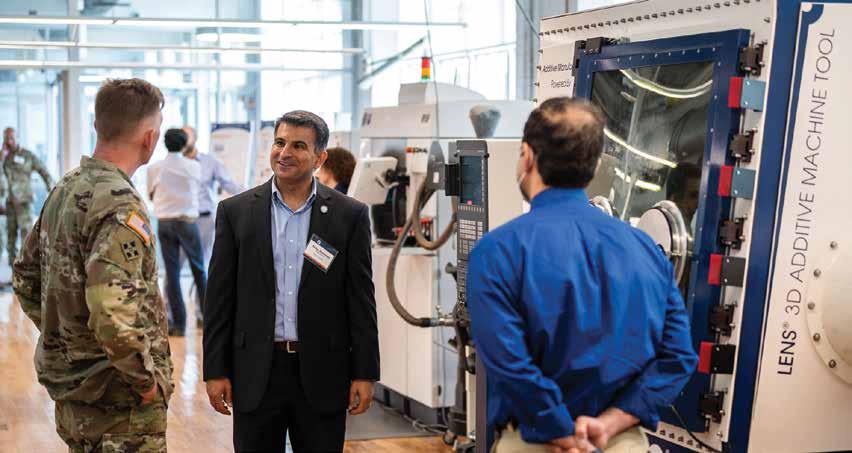
About 30 faculty members are involved in NCAME’s research activities, focused on five core strategic areas: structural integrity of AM materials; laser-material interactions and thermal aspects of AM; data analytics; digital manufacturing and AM cyber and physical security; and applications.
During 2020 and 2021, NCAME established new partnerships with the Federal Aviation Administration, as well as the U.S. Army DEVCOM Ground Vehicle Systems Center and DEVCOM Aviation & Missile Center, which seek to investigate matters related to AM qualification and certification — one of the main challenges for widespread adoption of AM in safety critical applications.
in a critically ill patient after receiving an experimental therapy for cancer.
That was good enough for a $1.9 million National Institutes of Health Maximizing Investigators’ Research Award for Early Stage Investigators.
More recently, his group developed novel label-free goldnanoparticle barcode imaging techniques for point-of-care COVID testing and rapid immune analysis in severe COVID patients.
The ongoing revolution in fundamental biology, immunology and clinical discovery critically hinges on the availability of diagnostic tools capable of decentralized point-of-care measurements to provide immediate quantitative information of protein levels at the bedside or in the clinic.
Enter Pengyu Chen.
The associate professor of materials engineering is developing innovative nanomaterial based optofluidic biosensing devices for rapid, accurate and sensitive detection of multiple secretory immune proteins. An assay developed by Chen’s Advanced Nanomaterials Engineering Laboratory was successfully used under the FDA’s emergency use program to direct anti-cytokine therapy
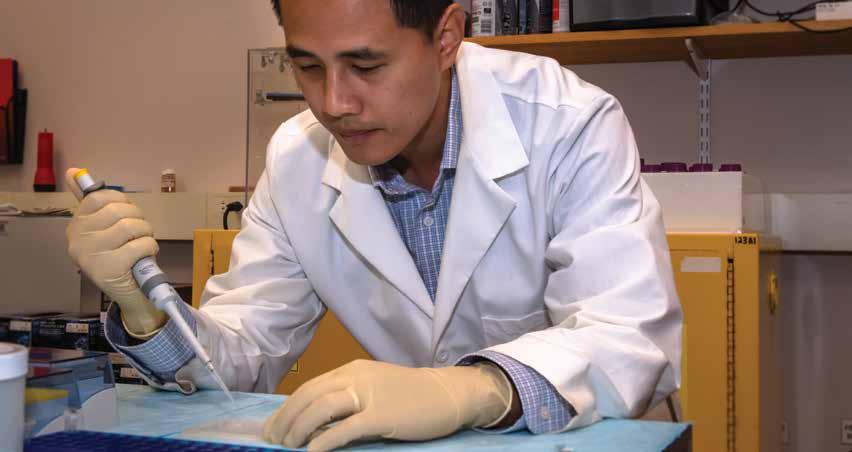
Chen is also using a 2020 National Science Foundation Faculty Early Career Development Award for research into aptamer induced self-assembly of nano-plasmonic structures for imaging cytokine secretion from single immune cells.

“Such an approach will establish a new paradigm that permits, for the first time, direct visualization of the dynamic intercellular communication process in the immune system,” Chen said.
Through a $2.6 million NIH grant, this imaging technique has been applied to mapping the cytokine secretion signatures in CAR-T cell immune therapy to provide a better and safer treatment for leukemia.

Xiaowen Gong Assistant Professor 334.844.1851 xzg0017@auburn.edu aub.ie/XGong Shiwen Mao Earle C. Williams Eminent Scholar Chair Professor 334.844.1845 smao@auburn.edu aub.ie/SMao
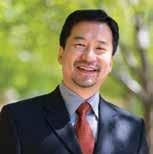
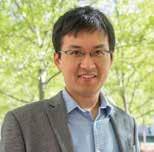 BY JOE MCADORY
BY JOE MCADORY
Samuel Ginn’s $25 million gift to the college in 2001 not only helped fund a wireless engineering degree program — but it continues to pay dividends. Wireless engineering faculty Shiwen Mao and Xiaowen Gong’s research combined to generate $540,000 in grants from the National Science Foundation (NSF).
Mao, the Earle C. Williams Eminent Scholar Chair Professor and director of the Wireless Engineering Research and Education Center, was awarded $320,000 by the NSF for “Data Augmentation and Adaptive Learning for Next Generation Wireless Spectrum Systems.” Through the research, Mao will devise innovative approaches through machine learning that enable wireless researchers and practitioners to acquire data more efficiently and at a reduced cost.
Gong, assistant professor in electrical and computer engineering, was awarded $220,000 by the NSF for his study, “Quality-Aware Distributed Computation for Wireless Federated Learning: ChannelAware User Selection, Mini-Batch Size Adaptation, and Scheduling.” The study explores innovative, cross-disciplinary research at the intersection of wireless networking and machine learning, studying wireless federated learning in order to achieve collaborative intelligence within wireless networks.
The project is expected to inspire further research and stimulate more insights to support various and emerging machine learning/artificial intelligence applications over wireless networks.
David Blersch, associate professor of biosystems engineering, was elected in June as president of the American Ecological Engineering Society, the premier professional society for advancing ecological engineering as a profession of practice.
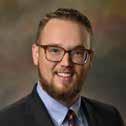


Sean Gallagher, the Hal N. and Peggy S. Pennington Professor in the Department of Industrial and Systems Engineering, has coauthored a book titled “Musculoskeletal Disorders: The Fatigue Failure Mechanism,” an incisive discussion of how MSDs develop and progress, as well as how they can be prevented and controlled.
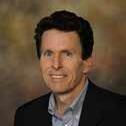
grant of $285,000 from the Semiconductor Research Corporation to focus on electronics design for sustained high-temperature operation in automotive underhood applications.
Selen Cremaschi, B. Redd & Susan W. Redd Eminent Scholar Chair Professor, has been elected 2nd Vice-Chair of the AIChE Computing and Systems Technology (CAST) Division. She will serve in this role in 2023, advance to the role of 1st Vice-Chair in 2024, and then Division Chair in 2025. Cremaschi will then serve one year as Past Chair in 2026. Additionally, Cremaschi’s longstanding collaboration with Chevron has been extended with a new 3-year $291,000 grant titled “Uncertainty Quantification and Reduction in Sand Transport Probability Predictions.”
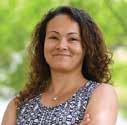
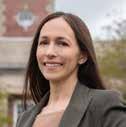
Pradeep Lall, the John and Anne MacFarlane Distinguished Professor of mechanical engineering, and his team of researchers were awarded two grants of $900,000 each from the NextFlex National Manufacturing Institute, which is supported by the Department of Defense. One focuses on developing additively printed electronics manufacturing methods for enabling processes with environmentally friendly water-based inks. The second focuses on additive methods for in-mold electronics to eliminate wire harnesses and develop next-generation human-machine interfaces.
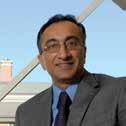
Lall was also awarded a
Elizabeth Lipke, the Mary and John H. Sanders Professor of chemical engineering, received a $250,000 grant from the National Science Foundation for the project “Automated Platform for Production and Distribution of Engineered Tissue VivoSpheres.” Along with her collaborators, Lipke was also issued a patent for her work titled “Encapsulation and Cardiac Differentiation of hiPSCs in 3D PEG-Fibrinogen Hydrogels.”
Jack Montgomery, associate professor of civil and environmental engineering, was appointed an editorial board member to Soils and Foundations, one of the leading journals in the field of soil mechanics and geotechnical engineering. Soils and Foundations is the official journal of the Japanese Geotechnical Society (JGS) and Montgomery is the only editorial board member serving from the United States.
Shiwen Mao, professor, Earle C. Williams Eminent Scholar Chair and director of the Wireless Engineering Research and Education Center (WEREC), gave a keynote speech at MobiMedia 2022 and presented the IEEE Transactions on Network Science and Engineering Distinguished Seminar, both in July.
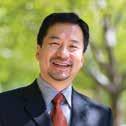
Chad Rose, assistant professor of mechanical engineering, and graduate student Avinash Baskaran won the 2022 Best Paper Award from the American Society of Mechanical Engineers
Dynamic Systems and Control Division’s Robotics Technical Committee for “Assessment of Neuromuscular Fatigue from Muscle Synergies in Hand Poses” presented at the 2022 Modeling, Estimation, and Control Conference (MECC).
Anton Schindler, Mountain Spirit Professor of structural engineering and director of the Highway Research Center, has been selected to serve as the Chair of the American Concrete Institute’s Foundation Scholarship Council. The ACI Foundation Scholarship Council administers fellowships and scholarships for students studying topics related to the concrete industry.
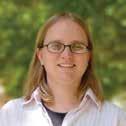

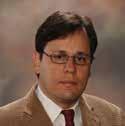
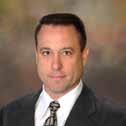


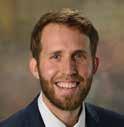
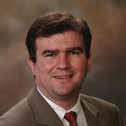
Alice Smith, the Joe W. Forehand/Accenture Distinguished Professor of industrial and systems engineering, is the editor of a new book which showcases the many diverse research breakthroughs achieved by women-led investigative teams in computational intelligence titled “Women in Computational Intelligence: Key Advances and Perspectives on Emerging Topics.” She also delivered keynote addresses at six international conferences.


Jin Wang, the Walt and Virginia Woltosz Professor of chemical engineering, was named a 2022 recipient of Auburn University’s Creative Research and Scholarship Award. Presented annually by the Office of the Vice President for Research and Economic Development, the award recognizes faculty who have distinguished themselves through research, scholarly works and/or creative contributions to their fields.
Listen
 Civil and environmental engineering faculty members Benjamin Bowers, assistant professor; Brian Anderson, associate professor; Jose Vasconcelos, associate professor; and Frances O’Donnell, assistant professor, have received a Federal Highway Administration 2022 Environmental Excellence Award in conjunction with NOAA and the research team from the University of New Hampshire for their research project entitled “Surface Transportation, Sea Level Rise, and Coastal Storms: A Sustainable Path to Increased Resilience.”
Civil and environmental engineering faculty members Benjamin Bowers, assistant professor; Brian Anderson, associate professor; Jose Vasconcelos, associate professor; and Frances O’Donnell, assistant professor, have received a Federal Highway Administration 2022 Environmental Excellence Award in conjunction with NOAA and the research team from the University of New Hampshire for their research project entitled “Surface Transportation, Sea Level Rise, and Coastal Storms: A Sustainable Path to Increased Resilience.”
Six outstanding engineering alumni and one longtime employee of the Samuel Ginn College of Engineering were honored by the Auburn Alumni Engineering Council during a ceremony in September for their distinguished professional careers. These alumni include four who were recognized as Distinguished Auburn Engineers, two as Outstanding Young Auburn Engineers and the college’s former assistant to the dean for her Superior Service.
Jim Cooper, ’81 Civil Engineering Jim Cooper graduated from Auburn in 1981 with a bachelor’s degree in civil engineering. In 1991, he founded Cooper Construction with a focus on personal relationships and satisfaction for every client. Cooper Construction operates as a general contractor specializing in industrial, warehouse/distribution and commercial projects.
The company’s expertise in private sector development has allowed for continued expansion and successfully completed projects throughout the United States. Cooper values a team-oriented mindset with a focus on thoroughness, clear communication and urgency throughout the organization. He is heavily involved in achieving the organization’s vision, and through his relentless efforts has grown Cooper Construction into a $400 million plus national company with offices in Birmingham, Huntsville and Dallas.
For his professional achievements, Cooper was named as Auburn’s Department of Civil Engineering Outstanding Alumnus in 2017, he received the Associated Builders and Contractors of Alabama
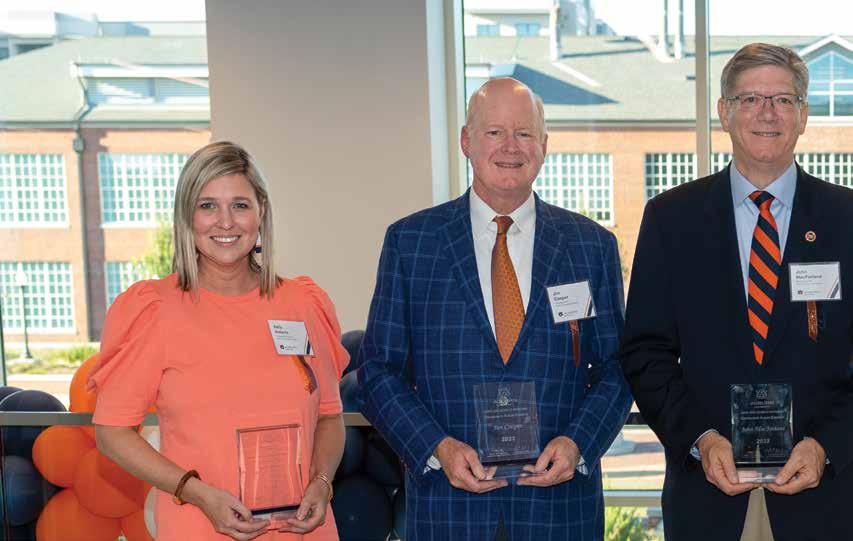
’58 and ’86 aerospace engineering.
highest honor — the Cornerstone Award — in 2019 and was inducted into the State of Alabama Engineering Hall of Fame in 2021.
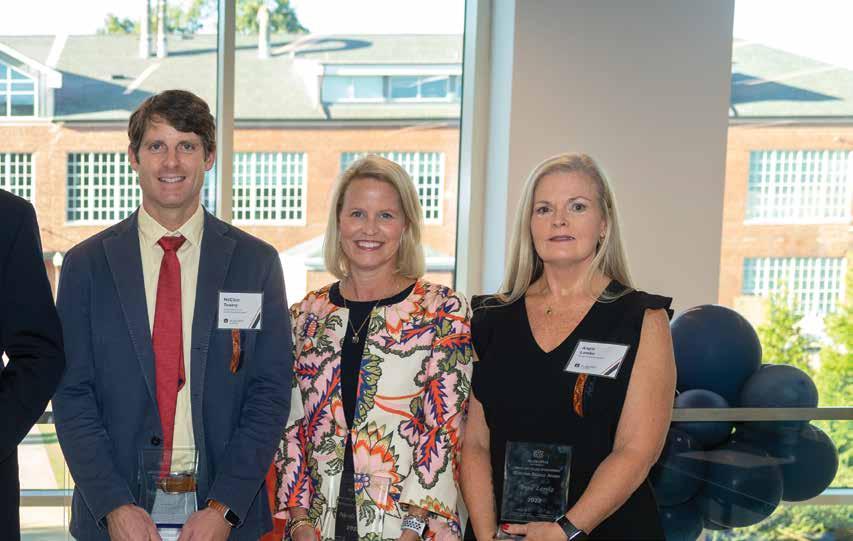
As a proud graduate of Auburn University, Cooper has generously devoted his time and resources to positively impact future generations of the state of Alabama’s engineers. He is an active member of the Auburn Alumni Engineering Council and the Department of Civil Engineering Advisory Board. Cooper and his wife, Anna, have a passion for connecting Auburn students with industry, and the college has named the Office Suites and Corporate Conference Room in the Office of Career Development and Corporate Relations in their honor. The Coopers are also members of Auburn Engineering’s Keystone, Ginn and Eagles societies as well as the university’s 1856 and Samford societies.
Nicole Faulk earned her bachelor’s degree in mechanical engineering in 1996 and earned her master’s degree in the same discipline in 1999. She currently serves as Alabama Power’s vice president of Transmission Construction and Protection & Control where she oversees the transmission line construction, substation
construction and P&C field services teams, providing a dedicated focus on critical field activities to ensure safe and efficient implementation of large transmission projects. She began her career with Southern Company in 1998 as an engineer in Southern Nuclear’s professional development program and previously served as Georgia Power’s senior vice president of Customer Strategy and Solutions, vice president of Corporate Services for Georgia Power and vice president of Customer Service and Operations at Mississippi Power.
In recognition of her professional accomplishments, Faulk was named Auburn’s Department of Mechanical Engineering Alumna of the Year in 2018. She currently serves as a director of the Auburn University Foundation Board, and formerly served as chair of the Auburn Alumni Engineering Council and chair of the State of Alabama Engineering Hall of Fame.
Faulk is a member of the university’s Foy, 1856 and Petrie giving societies and the College of Engineering’s Ginn Society. She has established scholarships in the Department of Mechanical Engineering, including an Ever Auburn Scholarship for underserved students.
John MacFarlane earned his bachelor’s degree in mechanical engineering in 1972, his master’s degree in the same discipline in 1973 and was a member of the Air Force ROTC during his time at Auburn. He began his military assignment at the Air Force Special Weapons Center in Albuquerque in 1974 and completed his military service in 1976.
In 1976, MacFarlane began his career with Exxon as an engineer at its Baton Rouge refinery. He progressed through several technical, supervisory, planning and management assignments there and in Houston before being appointed manager of the Exxon Billings, Montana, Refinery in 1987. He later served as Operations Manager for Exxon USA’s Lubes and Petroleum Specialties business in Houston before moving to Exxon Company International in New Jersey where he led the development and deployment of a maintenance and reliability management system for 18 international refineries. He later transferred to Exxon Research and Engineering, holding leadership positions in the Projects and Engineering Technology organizations. Upon the ExxonMobil merger, MacFarlane was appointed Manager of ExxonMobil Engineering Europe. He subsequently transferred to Virginia to run ExxonMobil’s downstream technology licensing business. He served in that position for 10 years, during which the business grew 10-fold, before retiring in 2011 after a 35-year career. For his professional achievements, MacFarlane was named as the Department of Mechanical Engineering’s Outstanding Alumnus in 2008.
MacFarlane and his wife, Anne, have endowed a Distinguished Professorship in the Department of Mechanical Engineering and have also endowed a Cupola Scholarship. For their dedication, the MacFarlanes are members of the university’s Foy, Petrie and 1856 societies and the College of Engineering’s Keystone and Ginn societies.
TK Mattingly earned a bachelor’s degree in aerospace engineering in 1958 and later went on to earn his doctorate in the same discipline in 1986. He began his military career as an ensign and held assignments on the USS Saratoga and USS Franklin D. Roosevelt. In 1966, he was one of 19 astronauts selected by NASA. He served as a member of the astronaut support crews for the Apollo 8 and 11 missions and was the astronaut representative in development and testing of the Apollo spacesuit and backpack. He was the designated command module pilot for the Apollo 13 flight but was removed from flight status 72 hours prior to the scheduled launch due to exposure to the German measles. His heroic support efforts were famously depicted by actor Gary Sinise in the Academy Award-winning film “Apollo 13.”
Mattingly would later fly on the Apollo 16, the fifth crewed lunar landing mission. During the return leg of the mission, he carried out an extravehicular activity (EVA) to retrieve film and data packages
from the science bay on the side of the service module, only the second such “deep space” EVA in history. To this day, there have only been 3 EVAs. Mattingly remains one of only 24 people who have flown to the moon.
Following his return to Earth, Mattingly served in astronaut managerial positions in the Space Shuttle development program. In 1982, he was named to command STS-4, the fourth and final orbital test flight of the Space Shuttle Columbia with fellow Auburn graduate Henry W. Hartsfield Jr., as the pilot. STS-4 completed 112 orbits of the Earth before landing at Edwards Air Force Base where they were greeted by President Ronald Reagan after the landing. President Reagan recognized the pair during his speech as “you two sons of Auburn.” He retired from NASA in 1985, and from the Navy in 1986 with the two-star rank of Rear admiral, and subsequently entered the private sector. He worked as a Director in Grumman’s Space Station Support Division and then headed the Atlas booster program for General Dynamics. From there, he served as Vice President in charge of the X-33 development program at Lockheed Martin. He finished his career at Systems Planning and Analysis in Virginia.
Kelly Roberts, ’05 and ’07 Civil Engineering
Kelly Roberts earned her bachelor’s degree in civil engineering in 2005 and a master’s degree in the same discipline in 2007. She is a Principal and Senior Structural Project Manager at Walter P Moore Atlanta with notable project experience including the 17-acre State Farm Park Center Campus, the National Center for Civil and Human Rights and the Children’s Healthcare of Atlanta Druid Hills Campus.
Roberts leads Walter P Moore’s Sustainable Design Community of Practice and is a founding board member of the non-profit material reuse center, Lifecycle Building Center. She is founding chair of the NCSEA Sustainability Committee and co-chair of the Atlanta Carbon Leadership Forum. She is immediate Past-President of ACI Georgia and a member of ACI 318 N, SEI SE 2050 Advisory Council, USGBC Georgia Market Leadership Board, AIA Atlanta COTE Steering Committee, and the USGBC MR Technical Advisory Group.
Roberts was named as one of the 2018 Top Young Professionals by Engineering News Record, she was recognized by Building Design+ Construction as one of the 40 Under 40 Class of 2021 and by Engineering Georgia Magazine as one of the 100 Most Influential Women.
McClain Towery, ’03 Civil Engineering
McClain Towery graduated from Auburn University with a bachelor’s degree in civil engineering in 2003. As a licensed civil engineer in Alabama, Tennessee and Georgia and as a LEED Accredited Professional, he managed a site development team at
Gresham, Smith and Partners for seven years. There, his team was in charge of due diligence, site selection, site design, permitting and construction administration. His projects carried him through 17 states and countless cities, towns and counties and the projects included office, multi-family, mixed-use, healthcare, subdivisions, retail and restaurants.
In early 2012, Towery started a new real estate development endeavor —Towery Development. Towery Development focuses on urban core opportunistic real estate development and investment projects. These projects include multi-family, office, mixed-use and industrial in Nashville urban submarkets. Towery Holdings and its subsidiaries have a market cap of approximately $350 million. Concurrently with his new company, Towery pursued a master’s degree from Auburn University in Real Estate Development in early 2012 to compliment his technical skills with business, financial, market analysis, real estate law and securitization skills for real estate.
Towery is a member of the Urban Land Institute and Auburn University Master of Real Estate Development Alumni Advisory Council and Advisory Board. He is an engineering Eagle donor and was named by the Nashville Post as an In Charge Development leader for the past seven years.
For the past 32 years, Angie Lemke has manned the front door to the Auburn University Samuel Ginn College of Engineering. In Lemke’s role, she organized and managed logistics of events, including researching appropriate events, organized mode of participation, coordinated educational or promotional materials, and coordinated staff, faculty and volunteer support services.
In addition to serving as the dean’s right hand, she assisted in planning and executing special engagements; developed and coordinated events; built relationships by developing and promoting interaction between the Board of Trustees, Auburn Foundation Board, College/School administration, business partners, alumni, faculty, staff, and students; managed a balanced program of events aimed at enhancing the reputation, scope and influence of the college, as well as the University overall; assisted with arranging travel accommodations for individuals associated with special events; maintained a comprehensive events calendar and managed and adhered to the special events budget of the college; supported and assisted with existing programs, conferences, or events within the college; and performed high level administrative and technical support duties for three deans. She retired from full-time work earlier this year.
Closer to home, Lemke has been a vital part of the Auburn Alumni Engineering Council, managing information packets, mailouts, updating information on council members, planning the dinners and meetings, etc. She served as integral assistant to the council secretary.
The Auburn Alumni Engineering Council (AAEC) was formed in 1966 as a group of Auburn Engineering alumni who work together to support the vision and goals of the Samuel Ginn College of Engineering. The council meets twice annually to assist and advise the college, and its members serve on a variety of committees geared to the mission and operation of the college. Council members are an active and valued component of the College of Engineering family. They demonstrate a continuing commitment to move the college to new levels of excellence and take its place among the nation’s premier engineering institutions. The council provides leadership and participation in areas such as academics, development, governmental affairs and public relations.
1301 Shelby Center
1161 W. Samford Ave., Building 8 Auburn, AL 36849-0001
